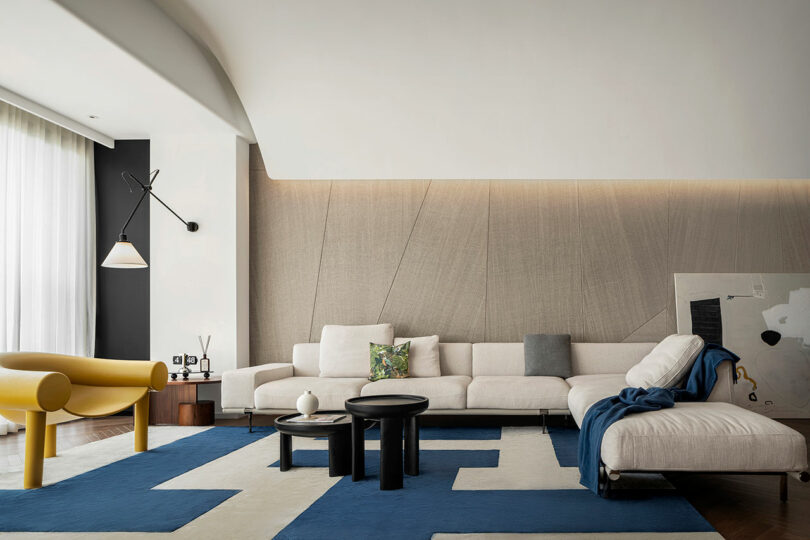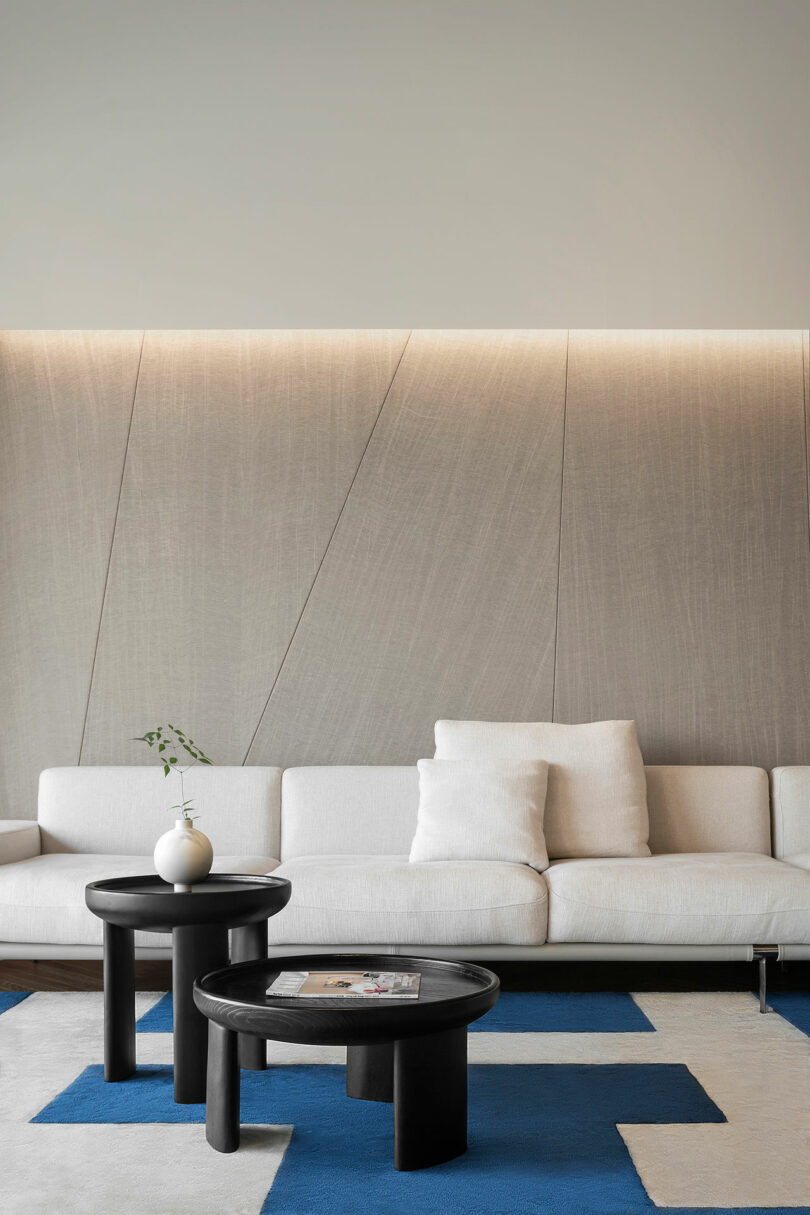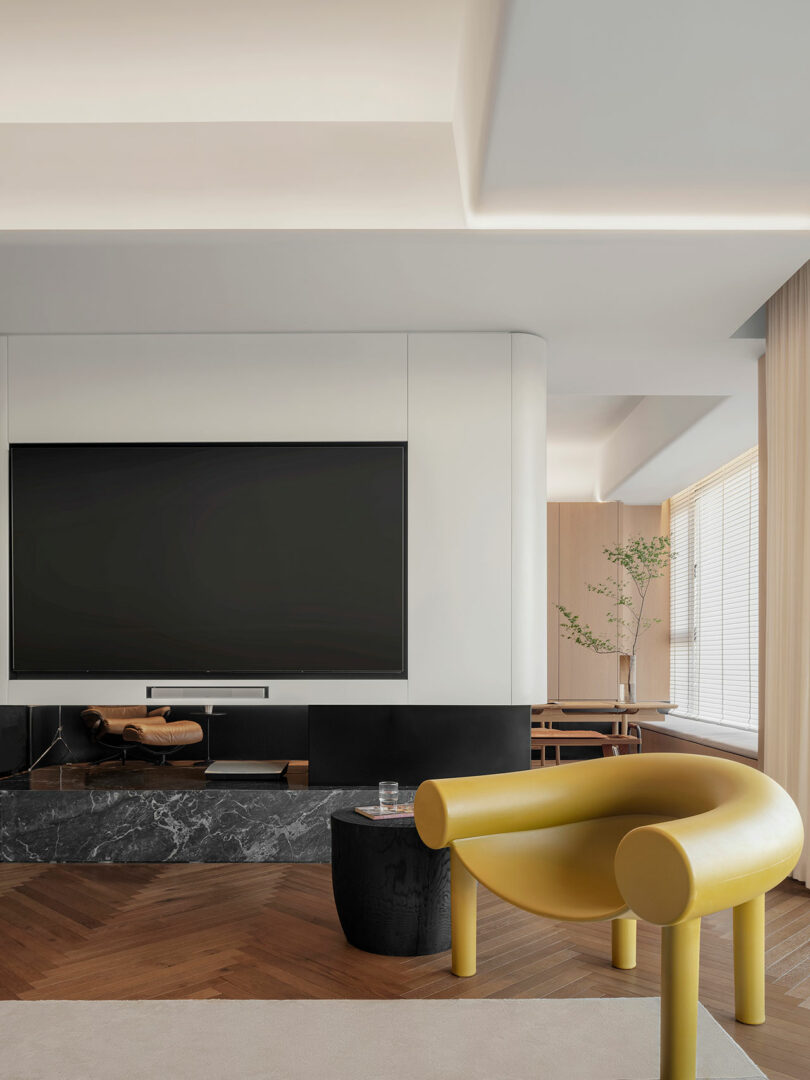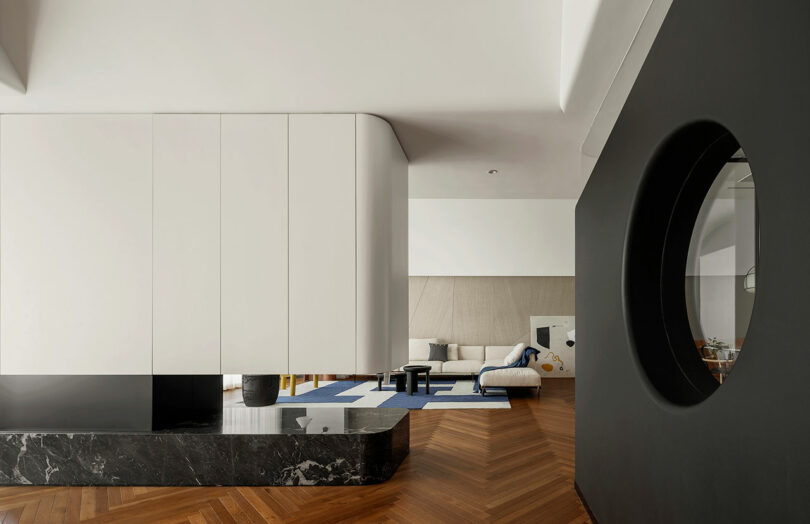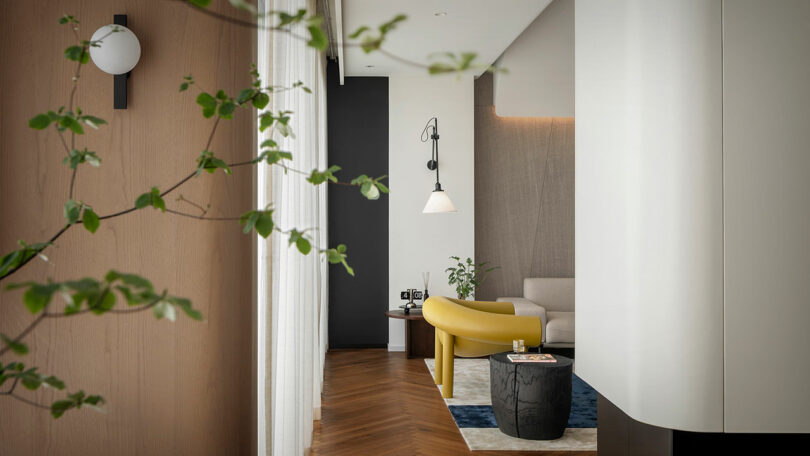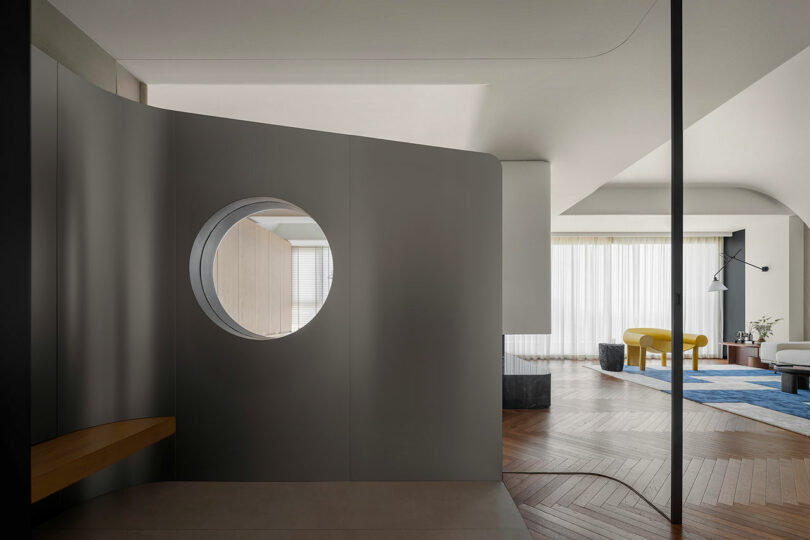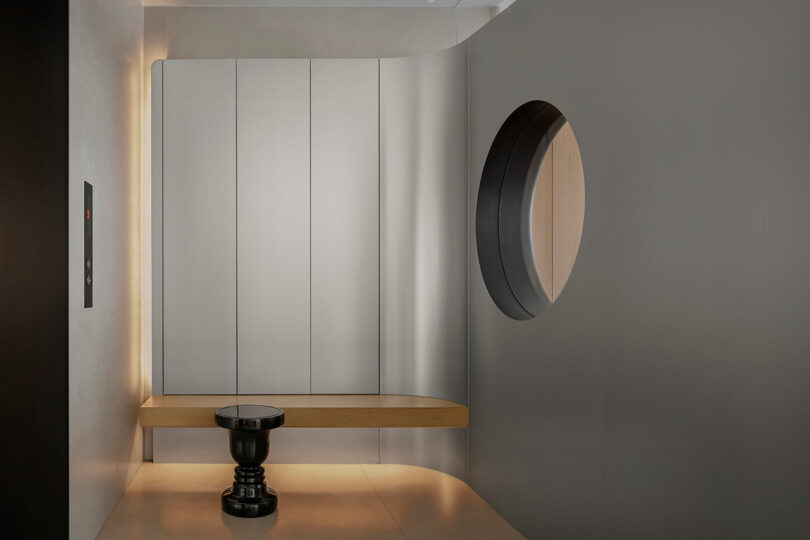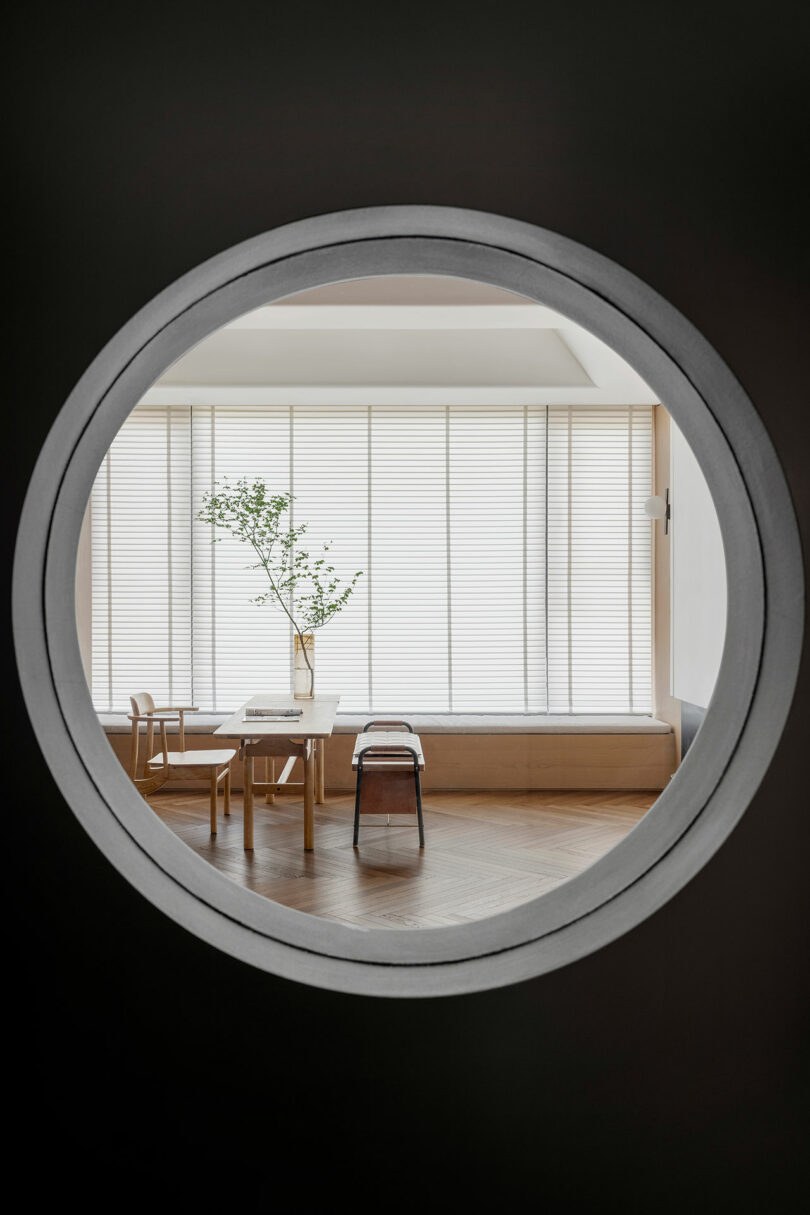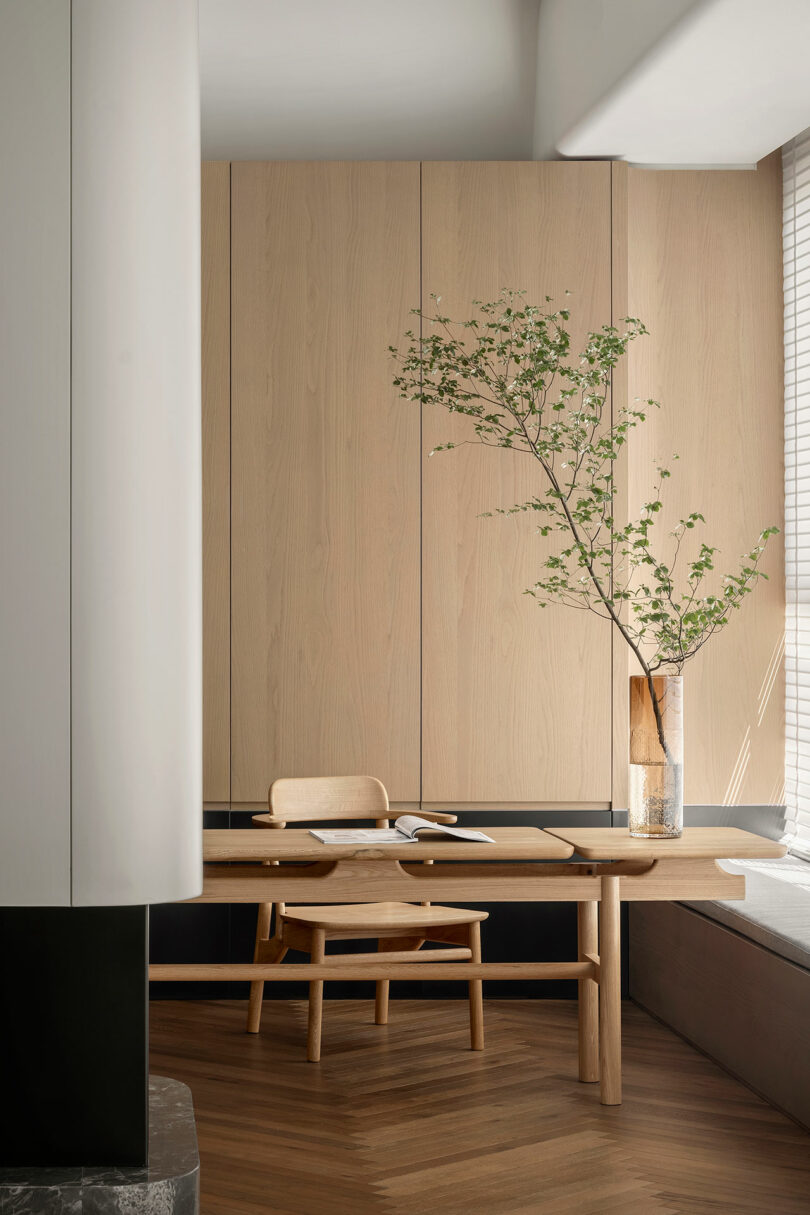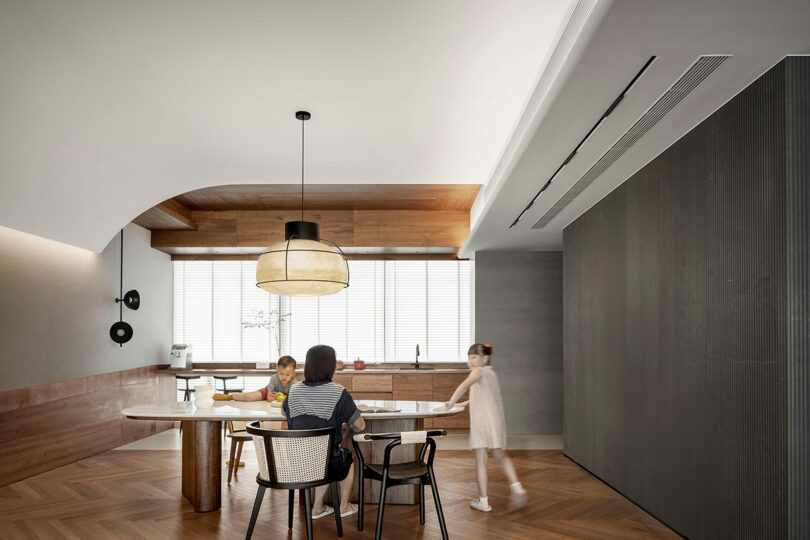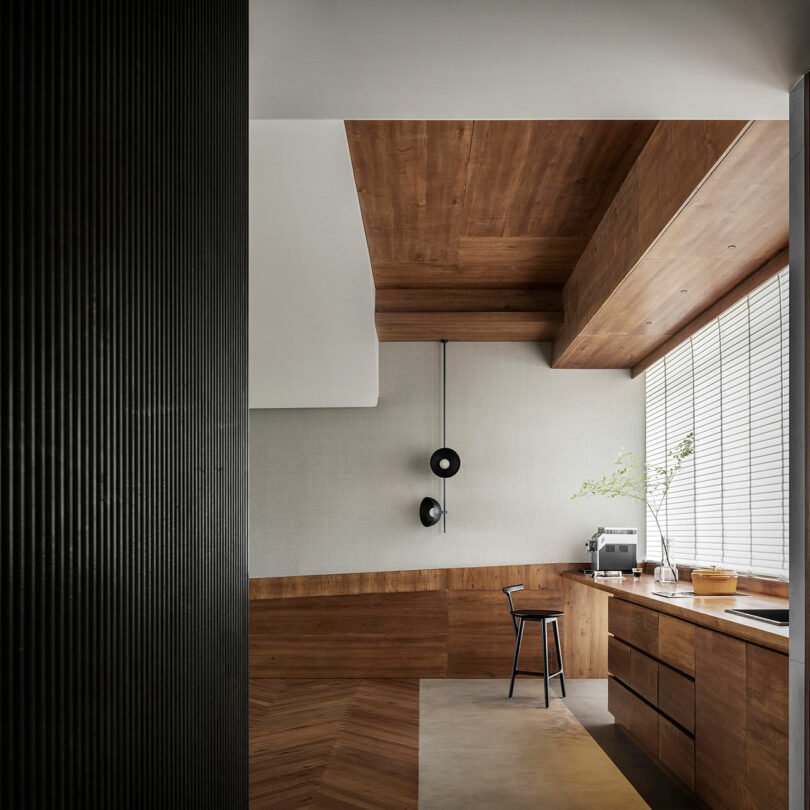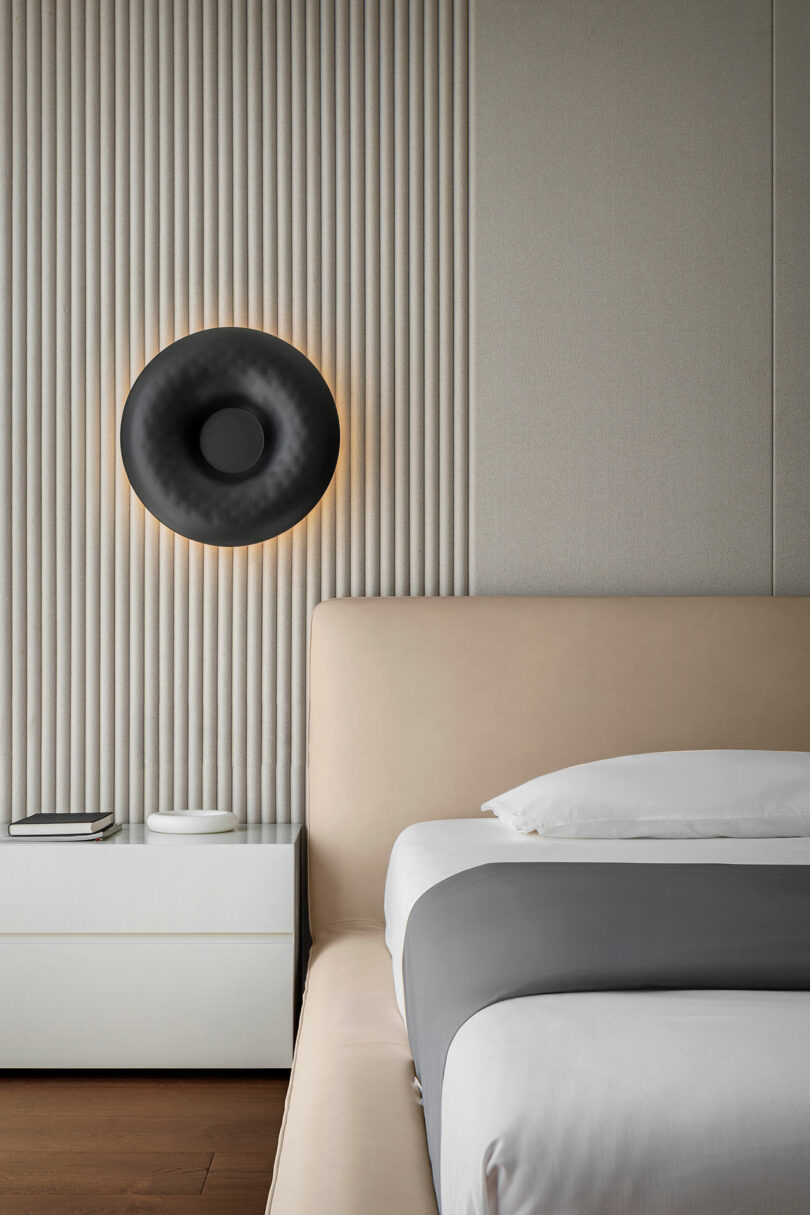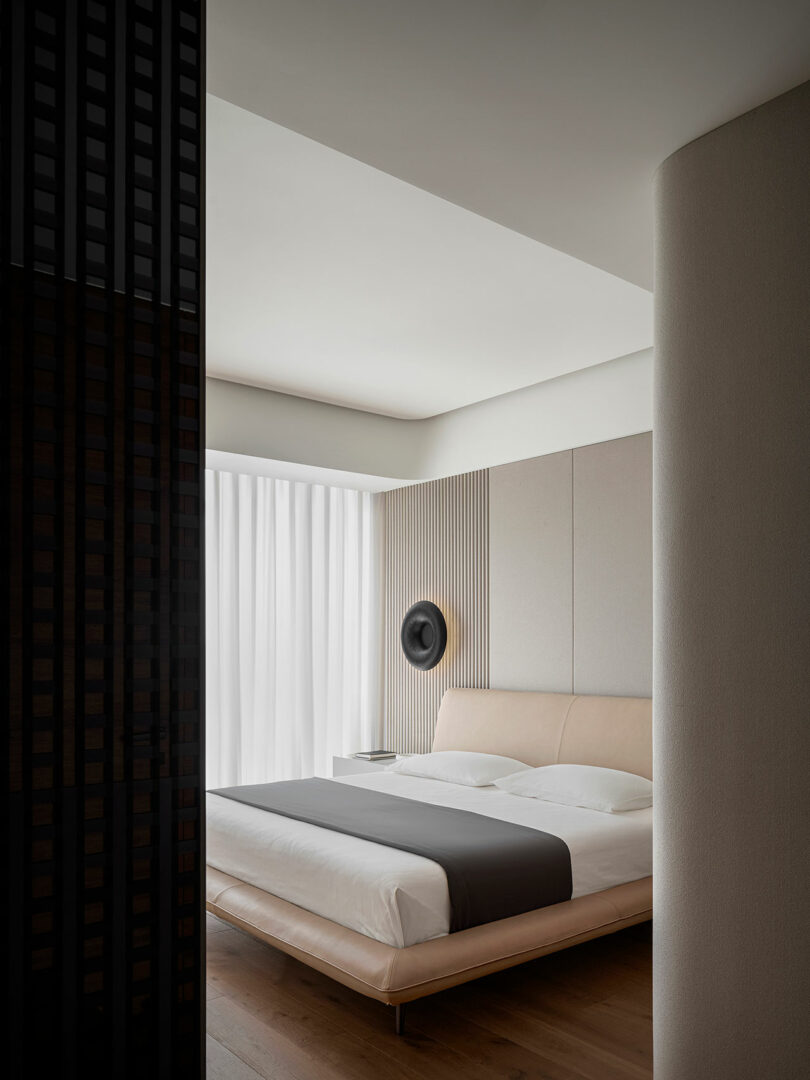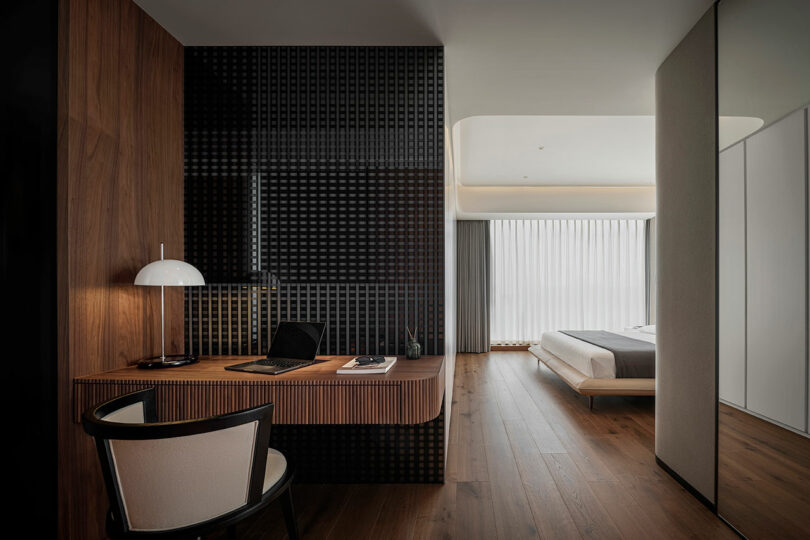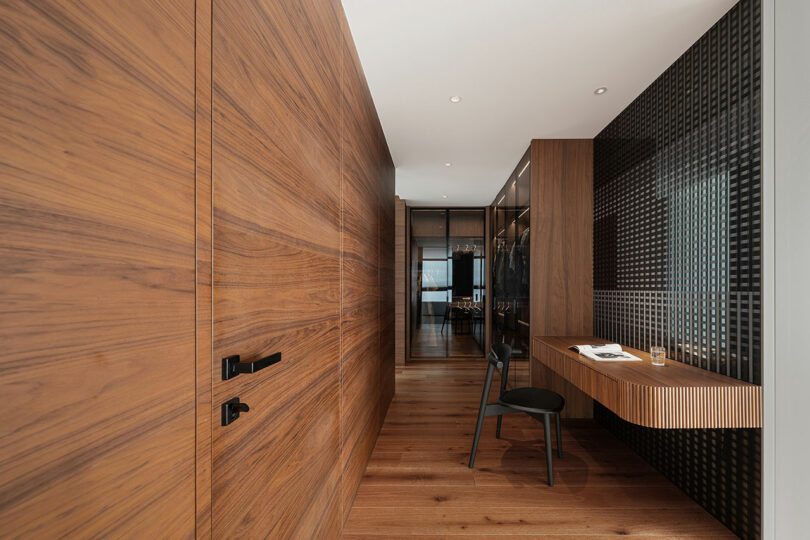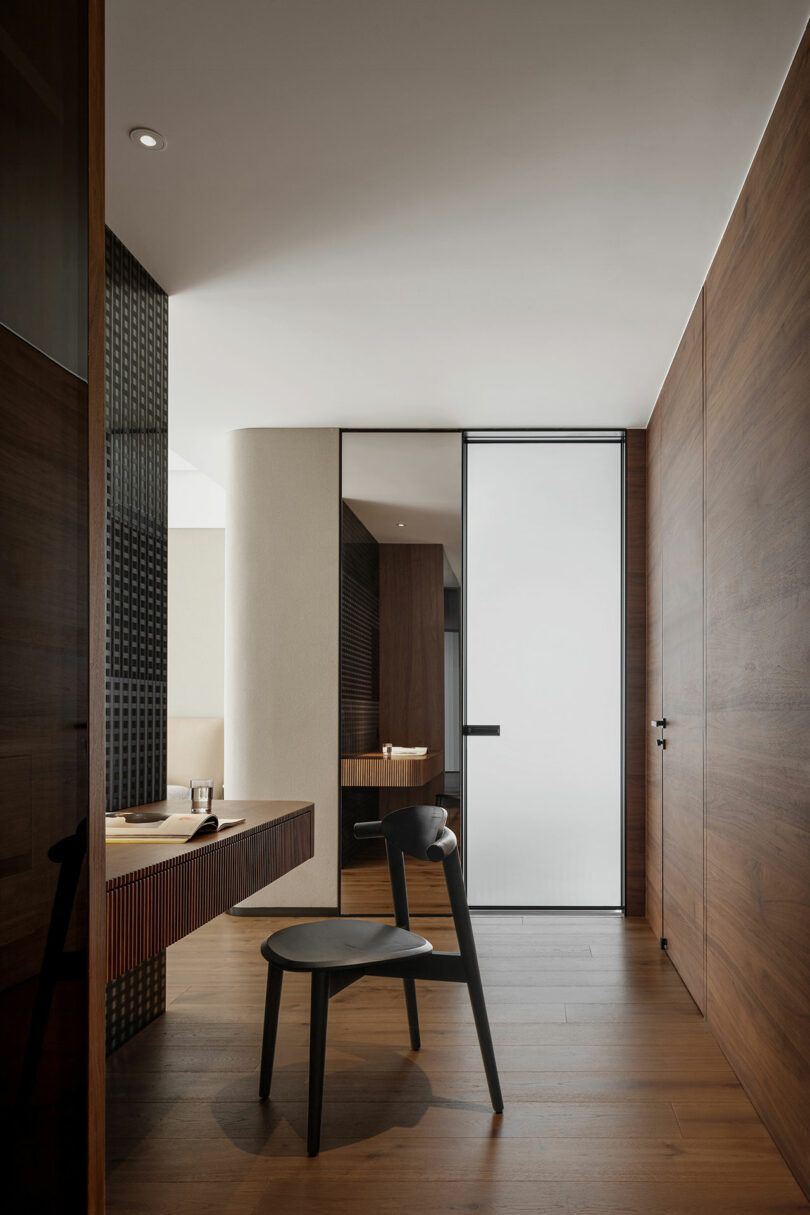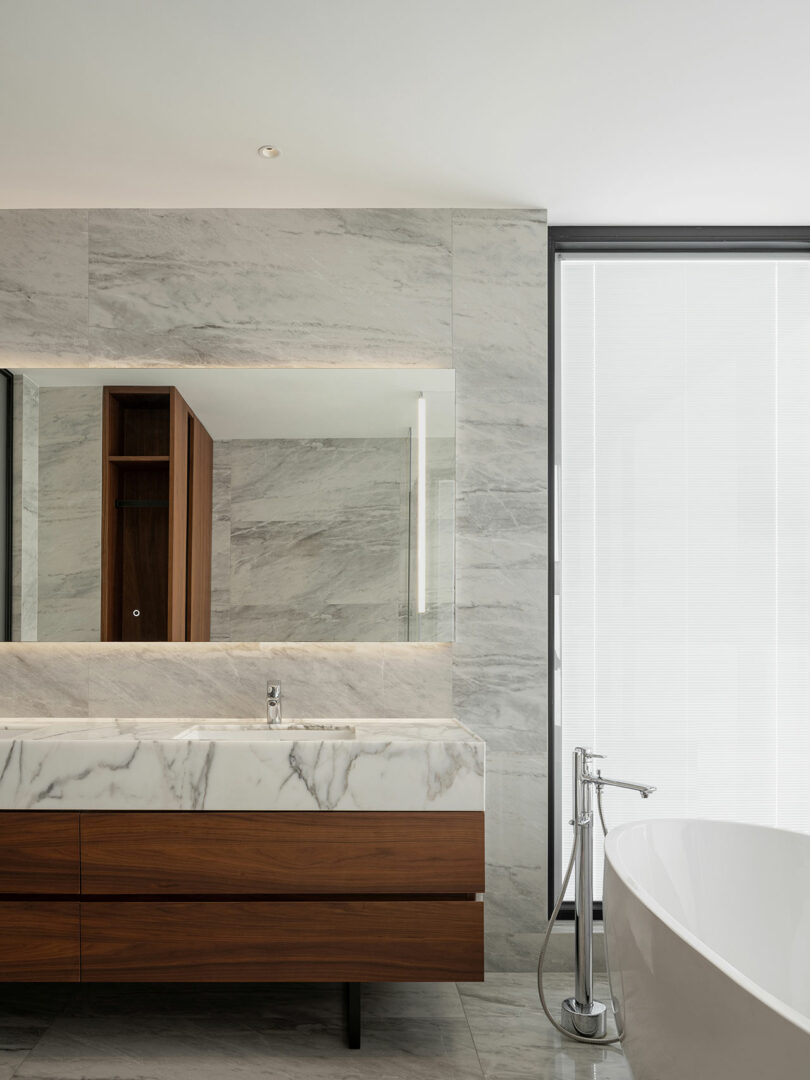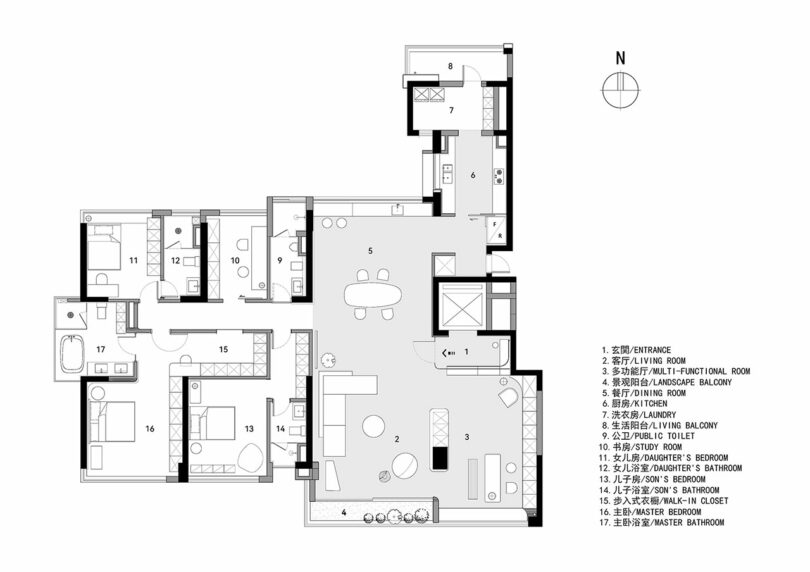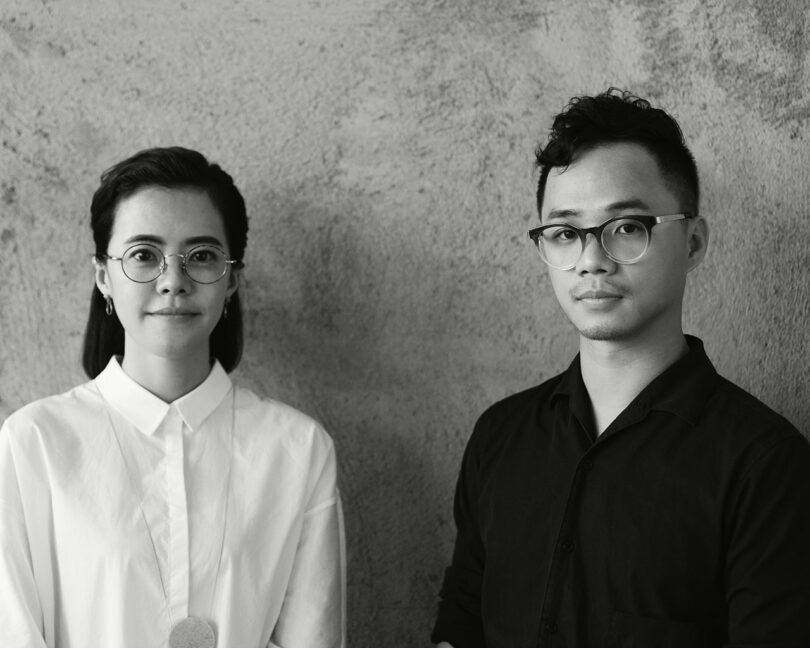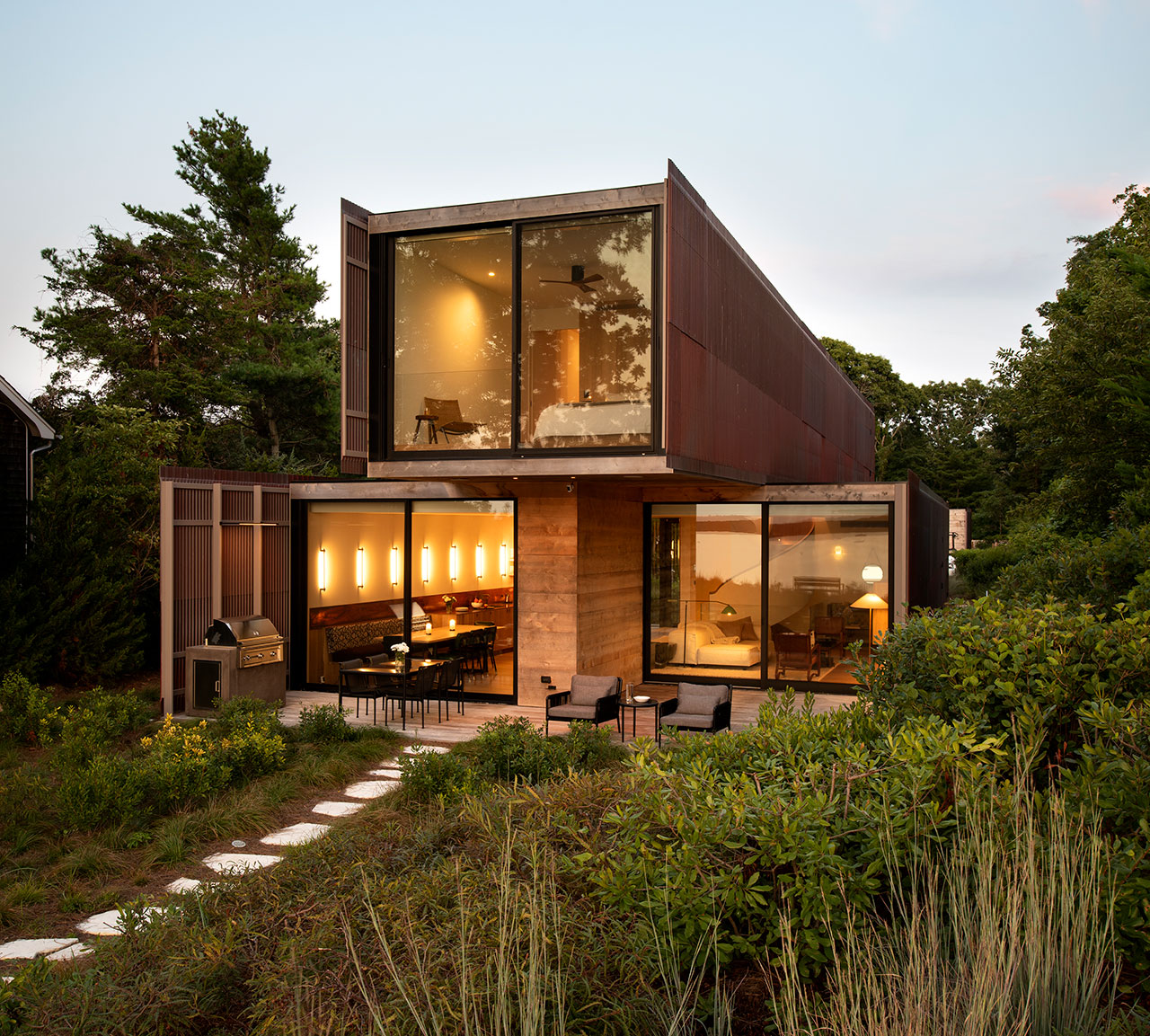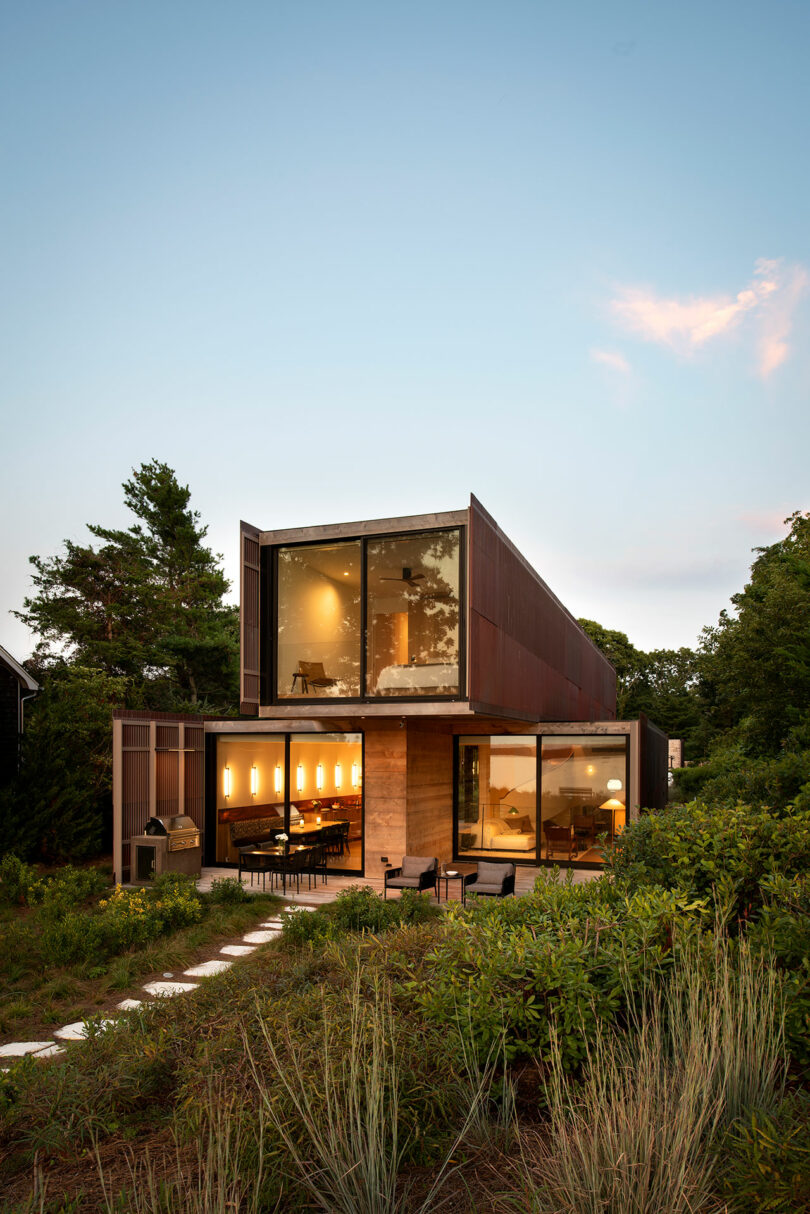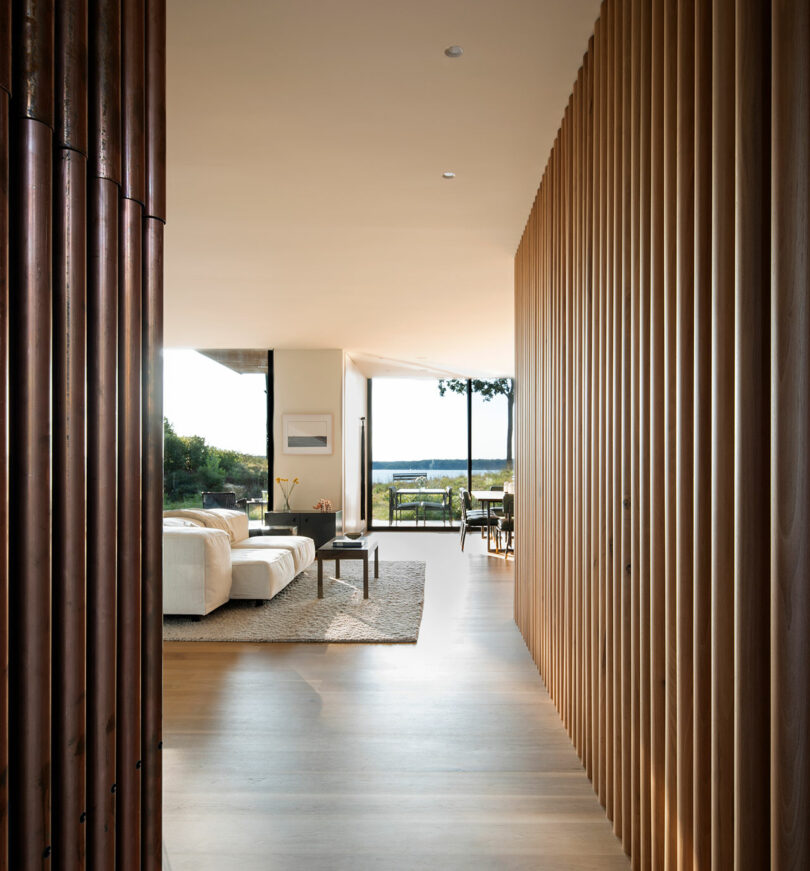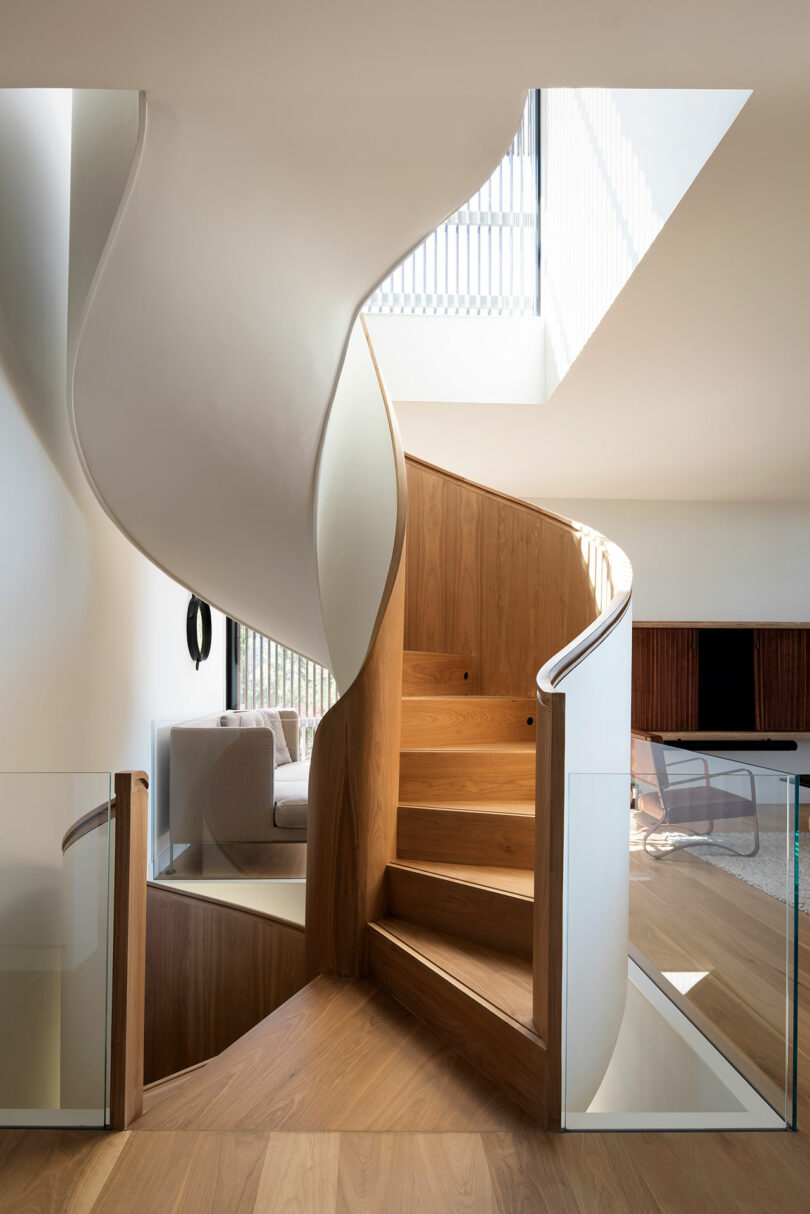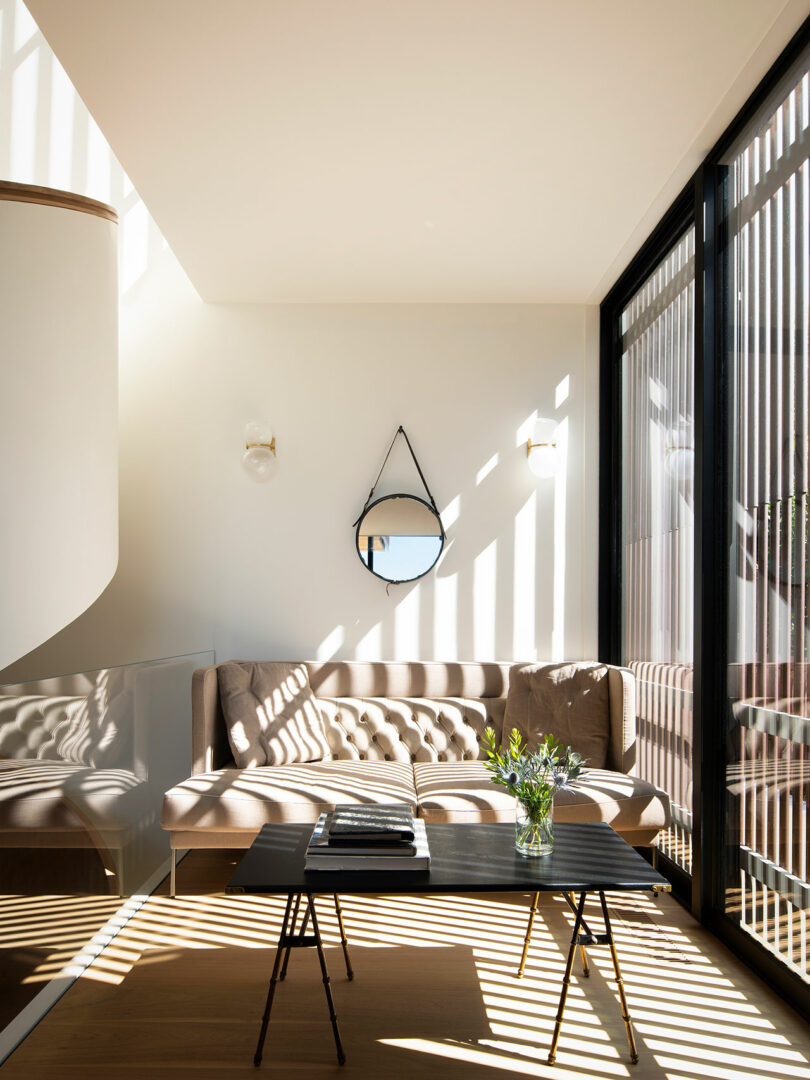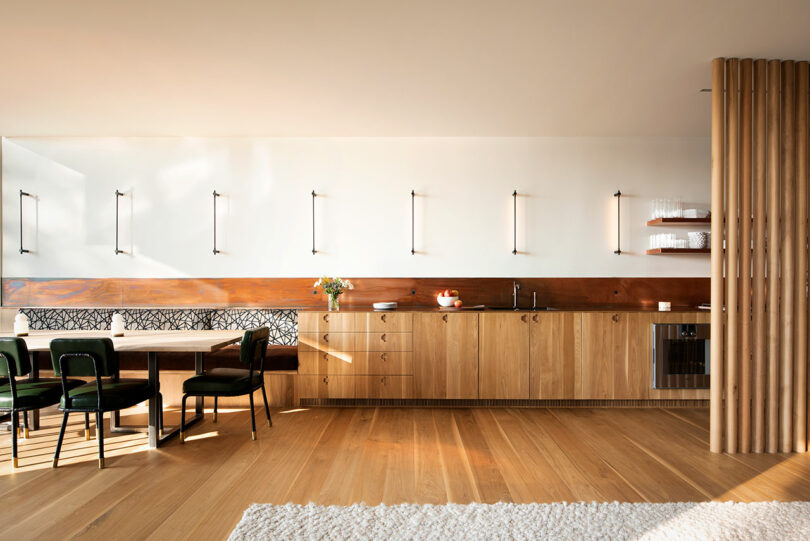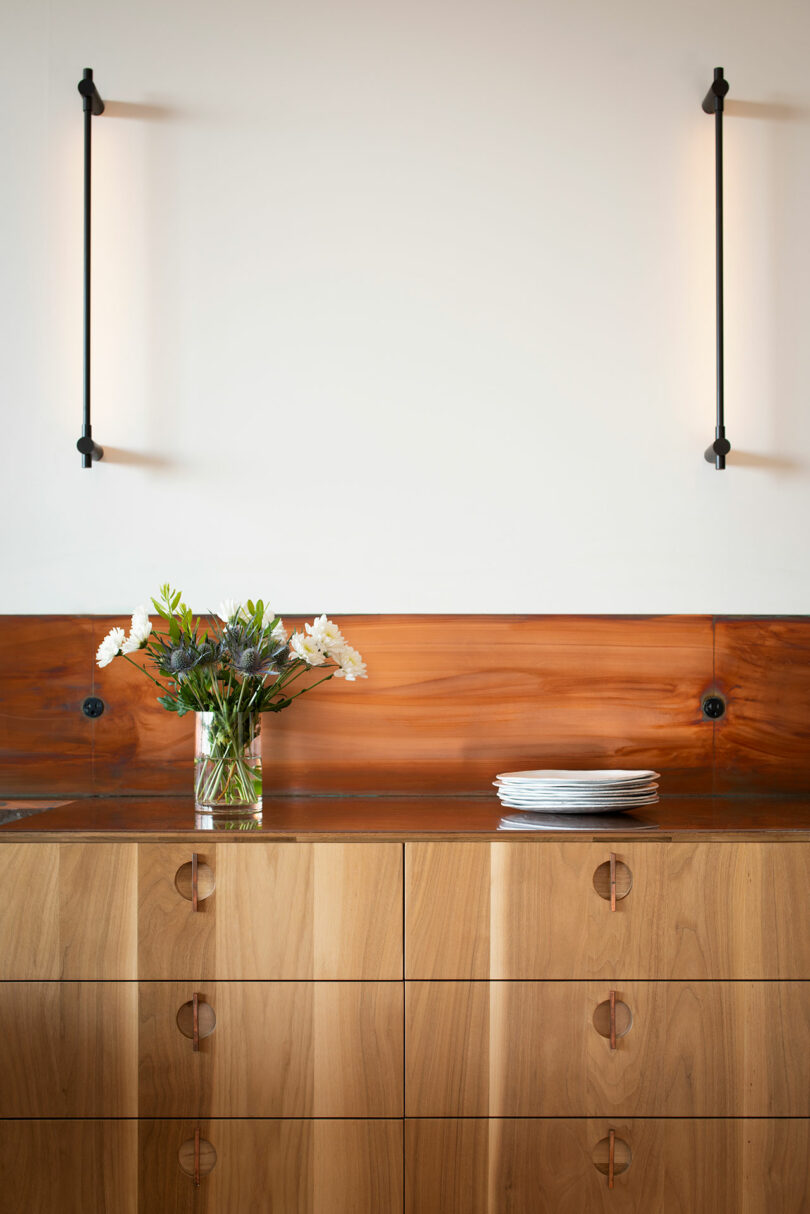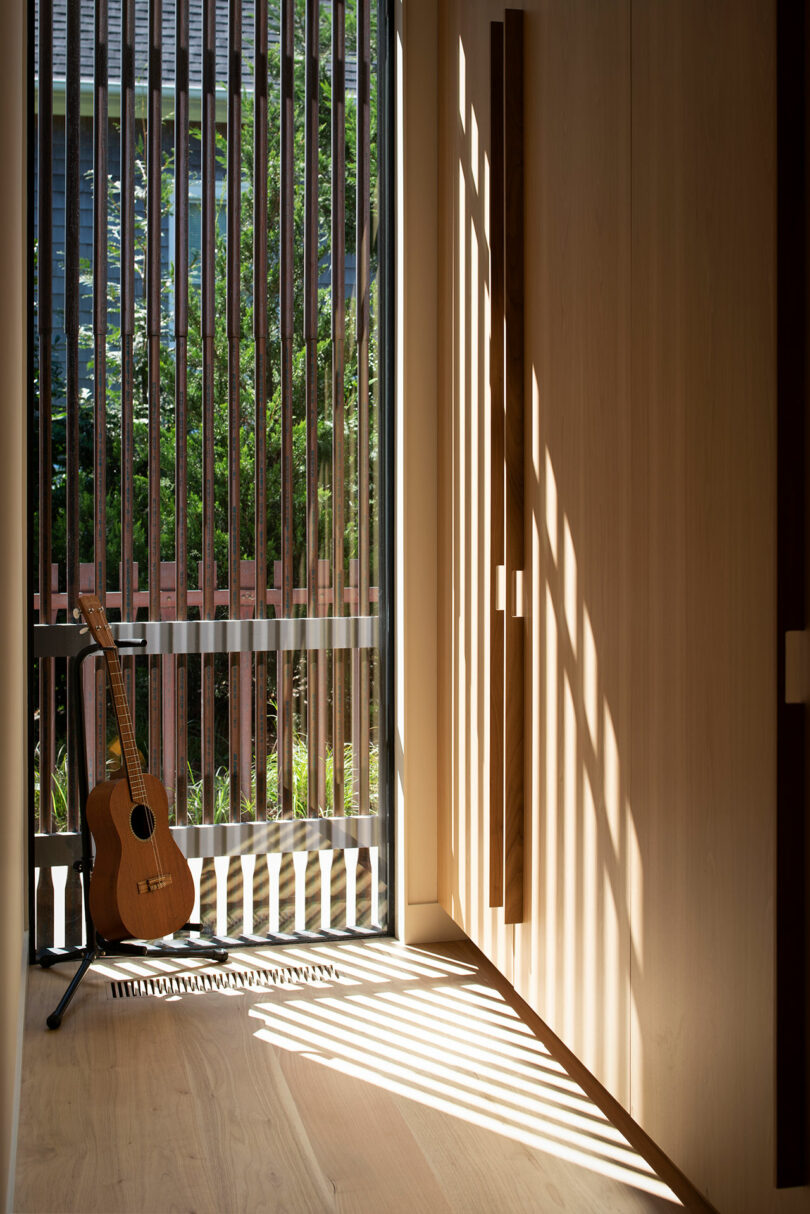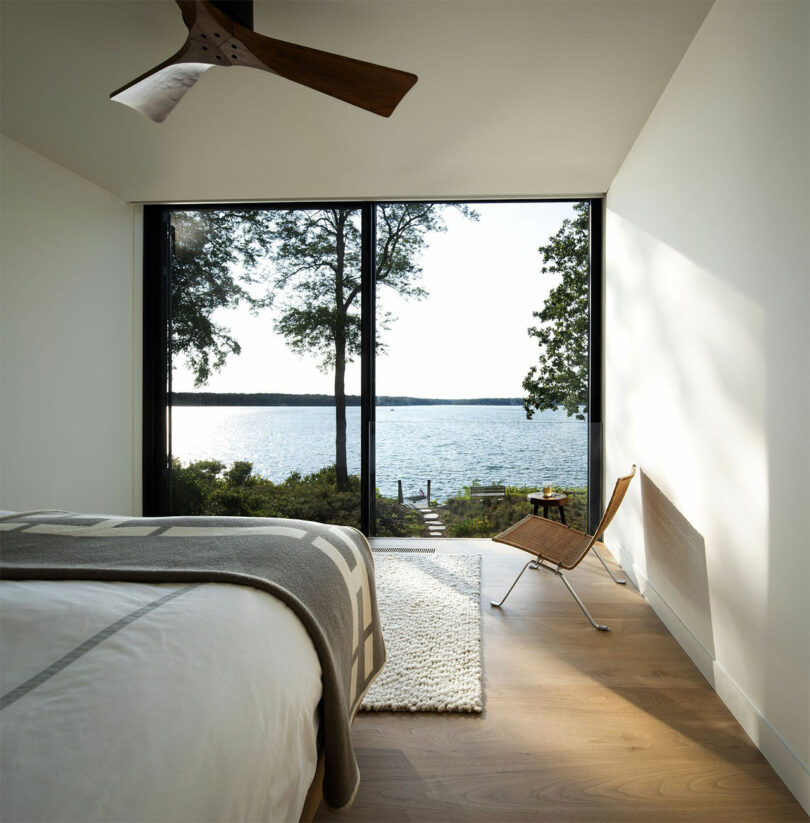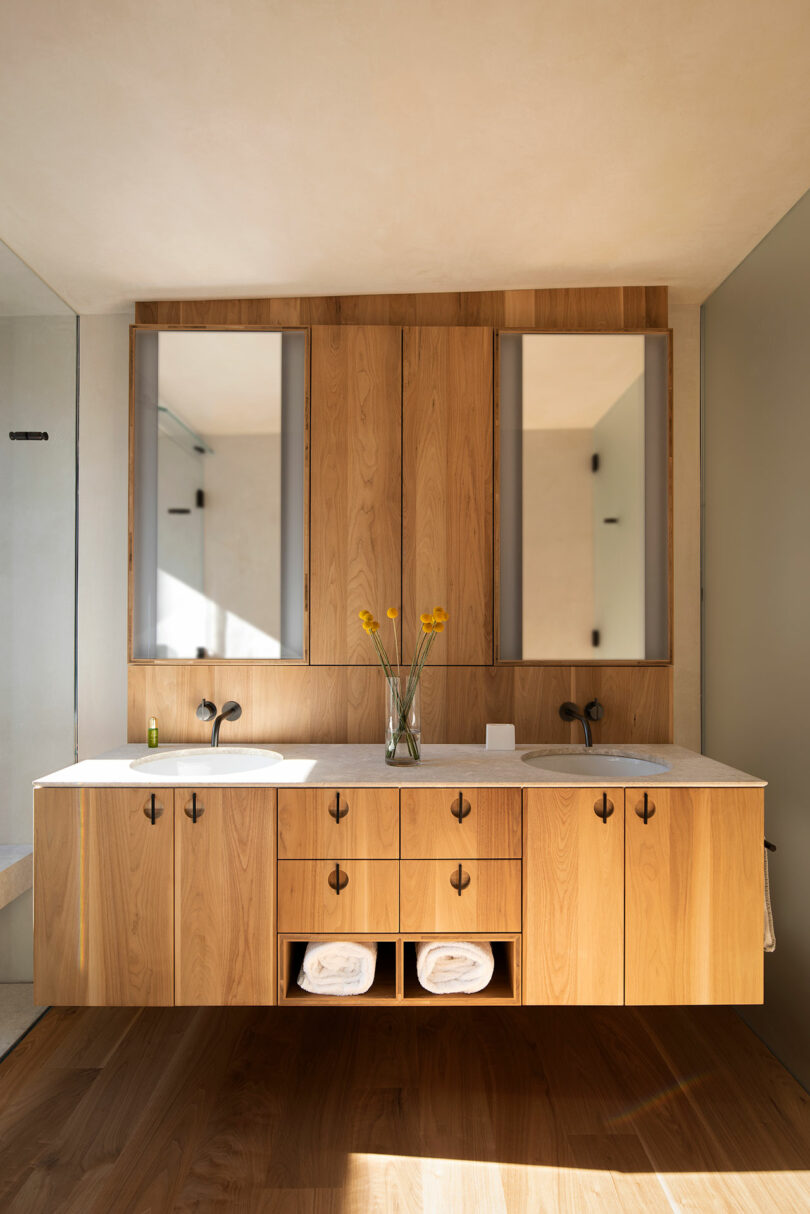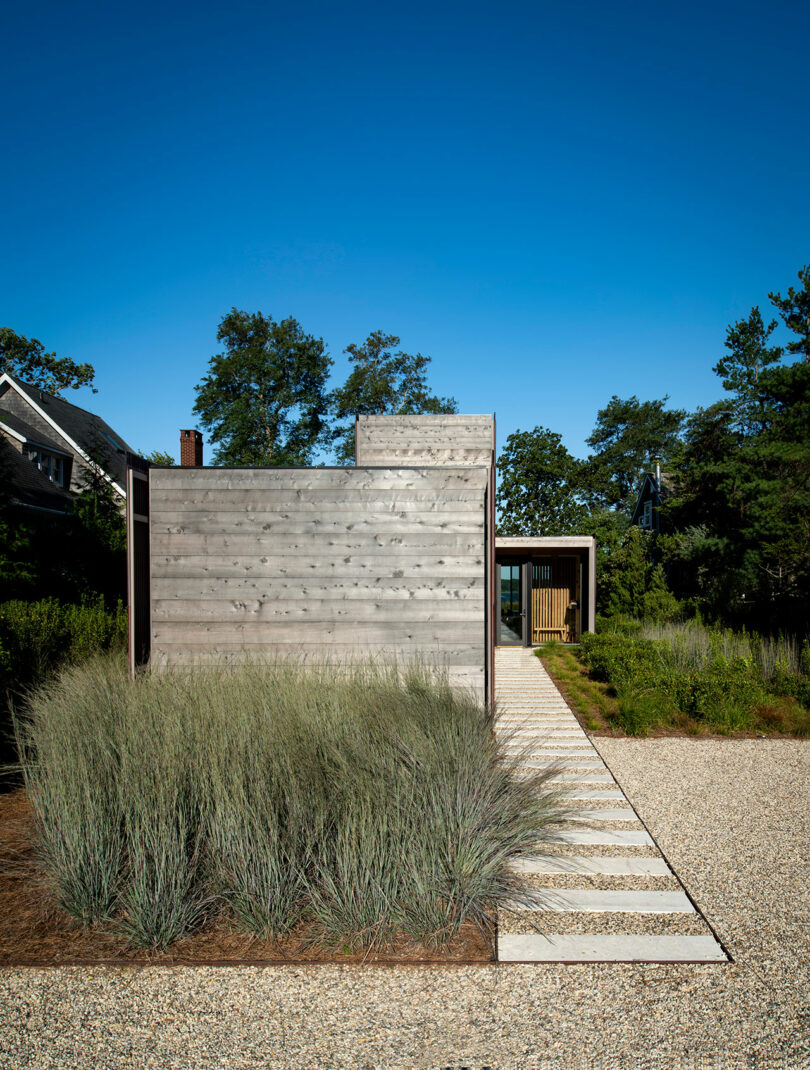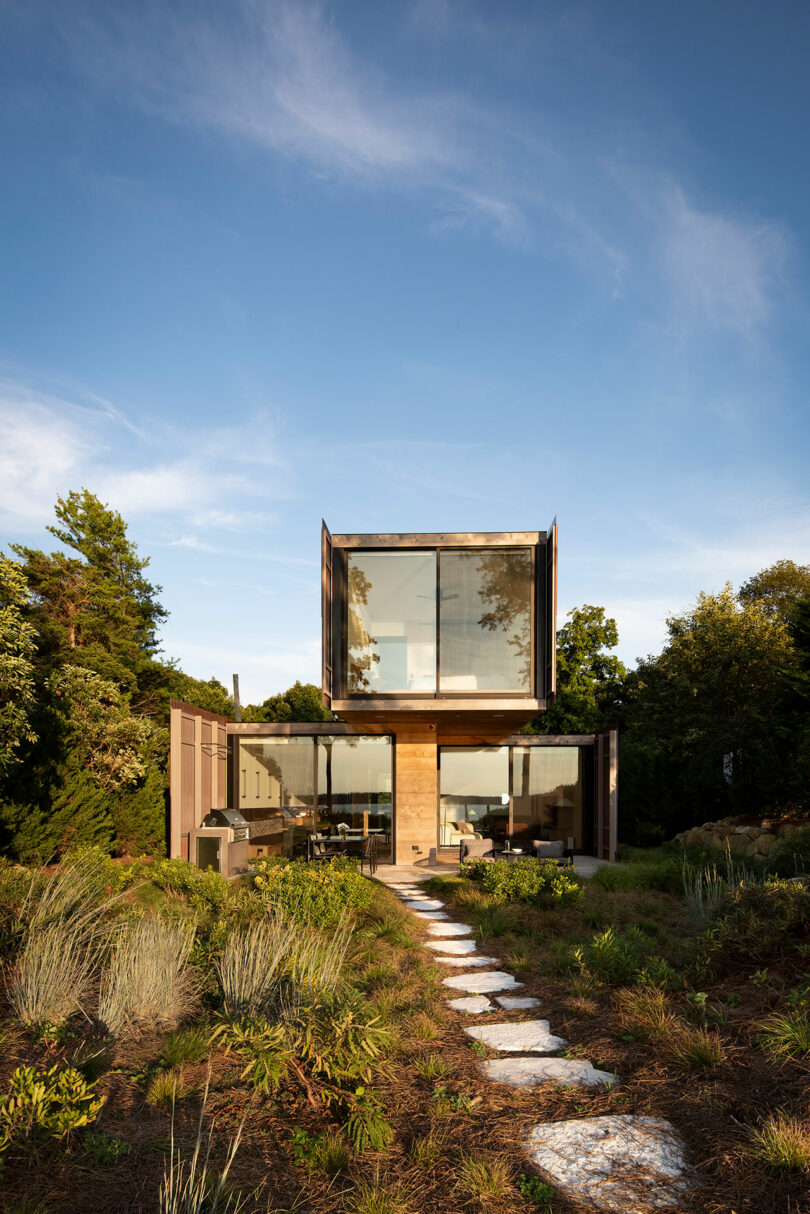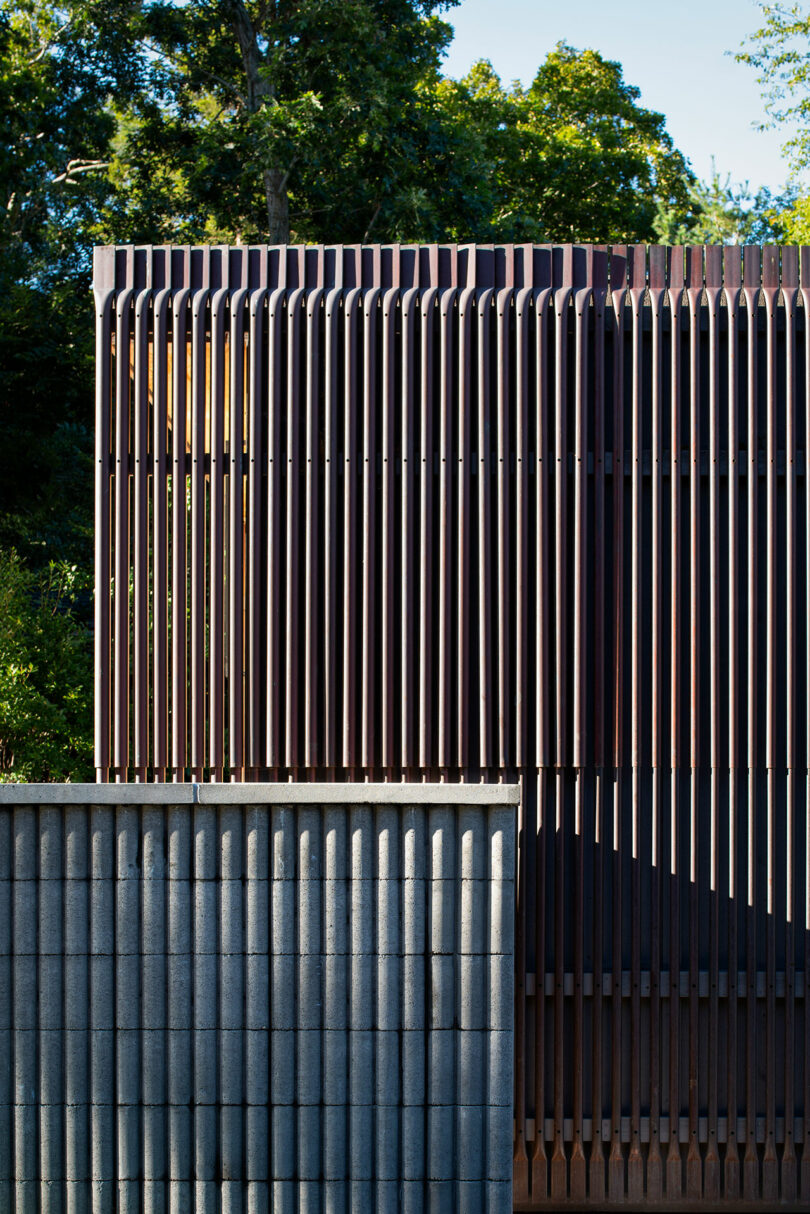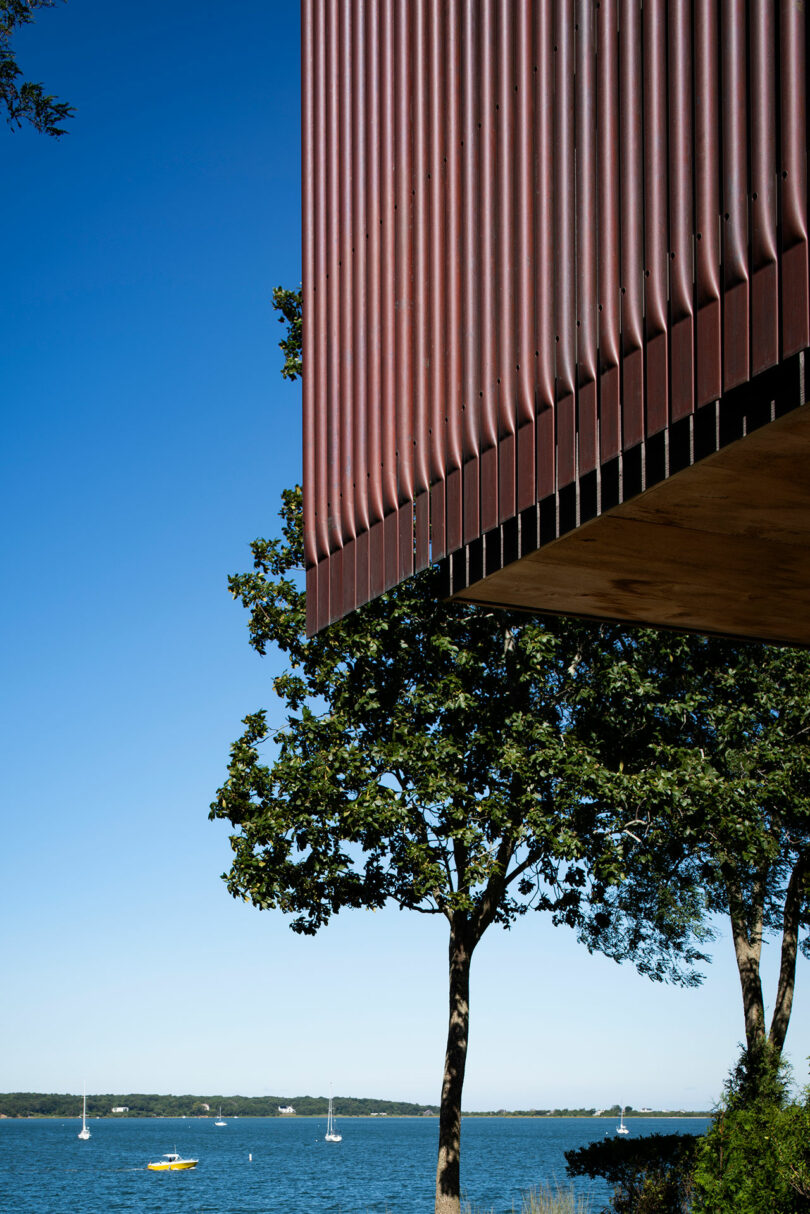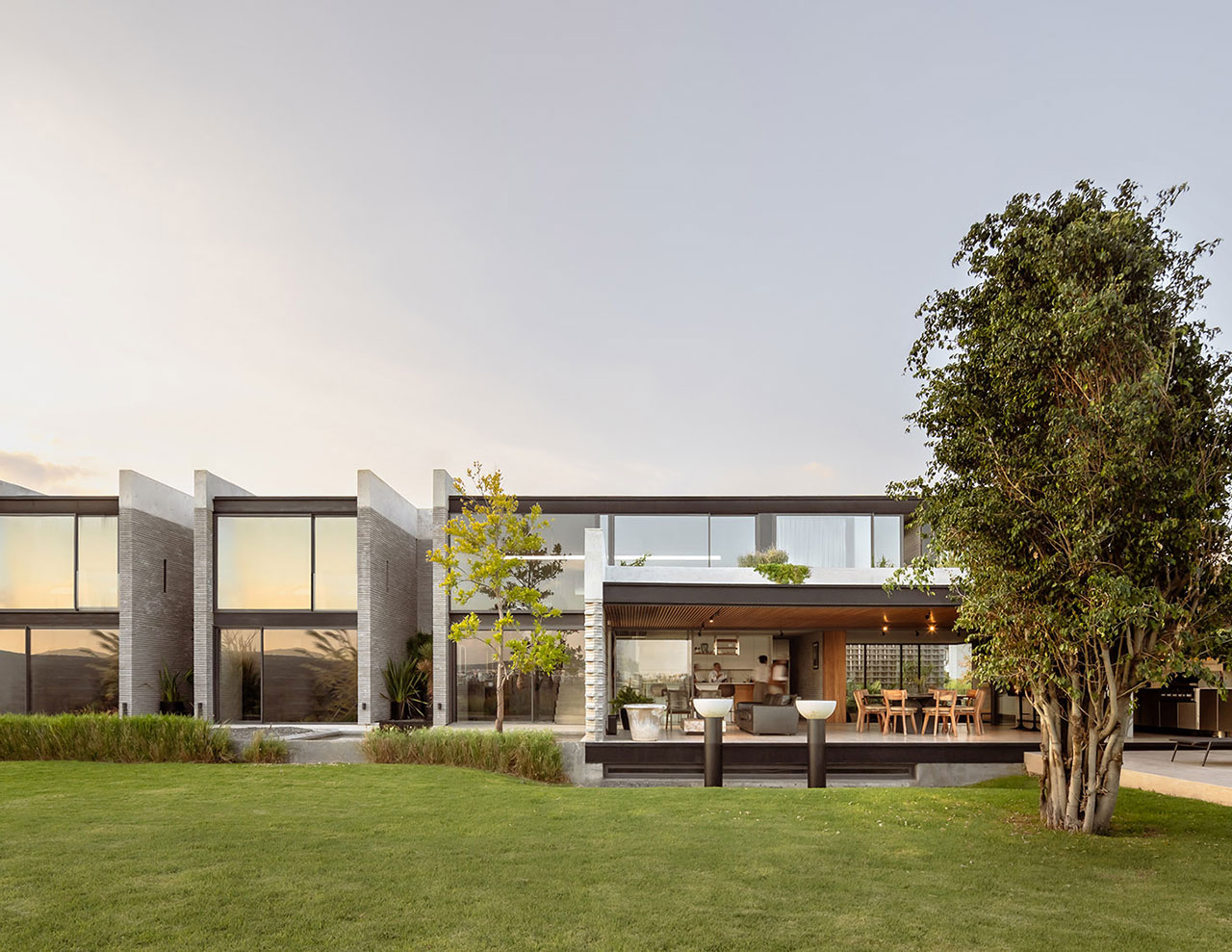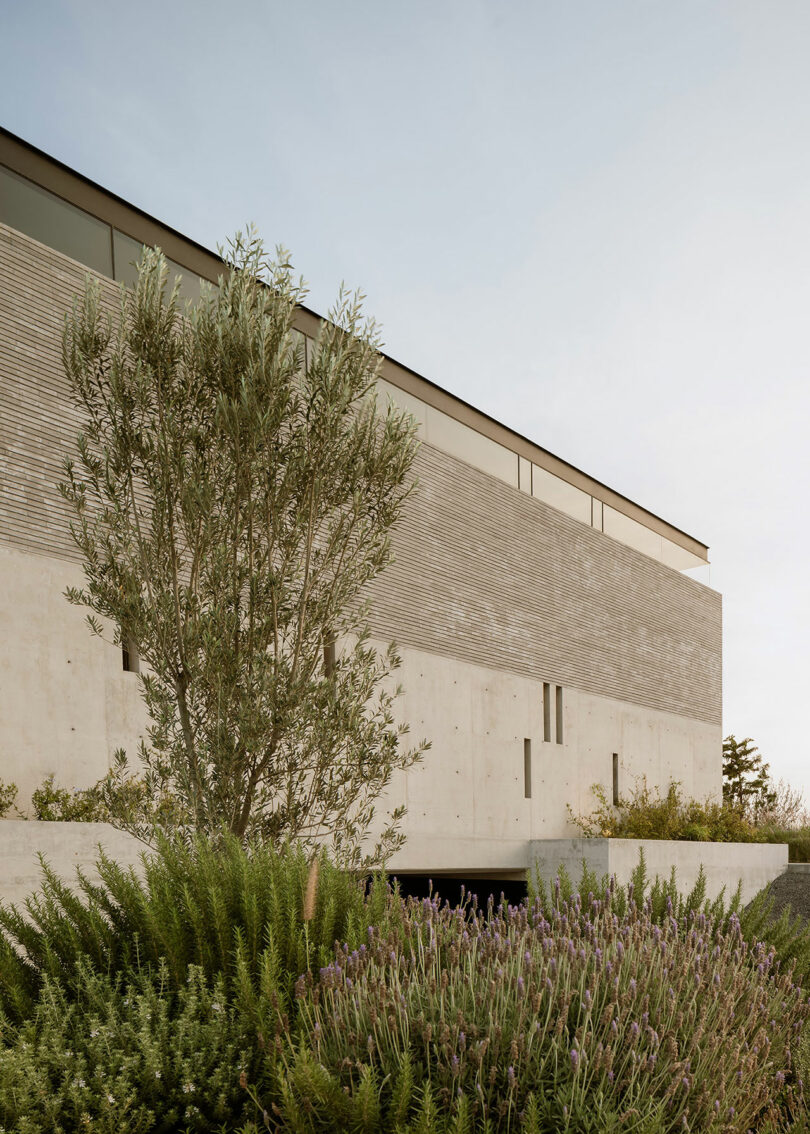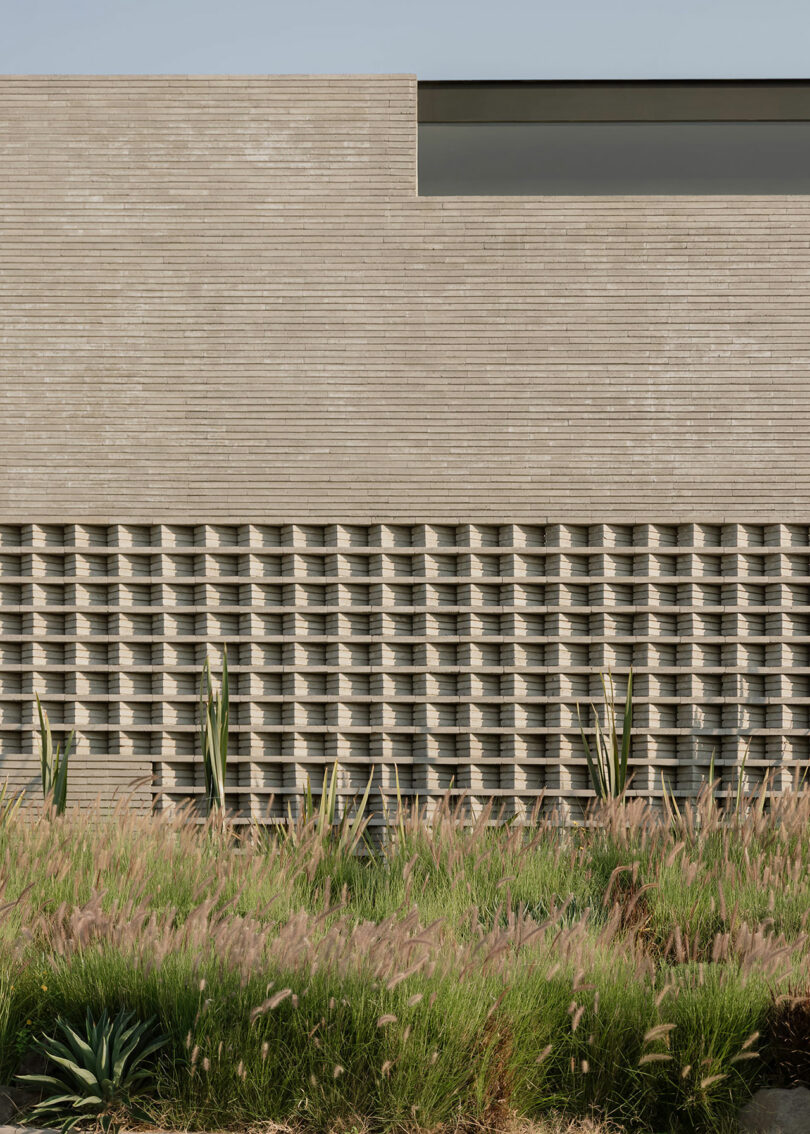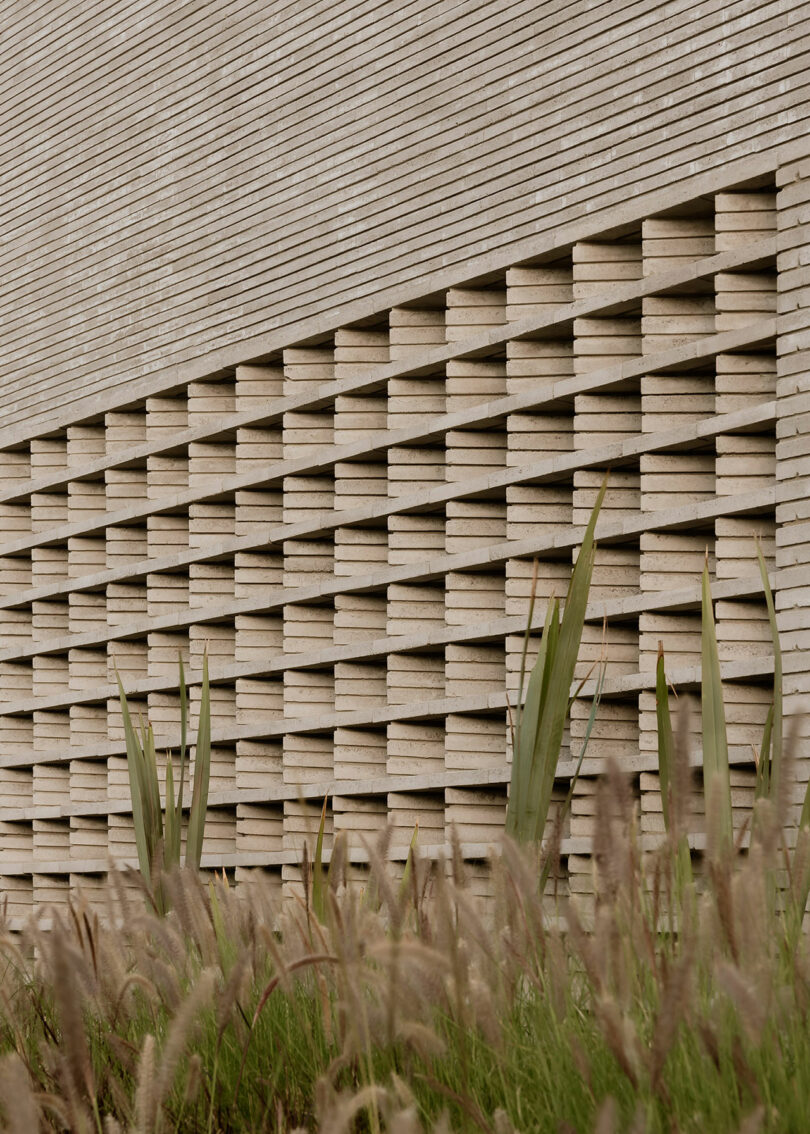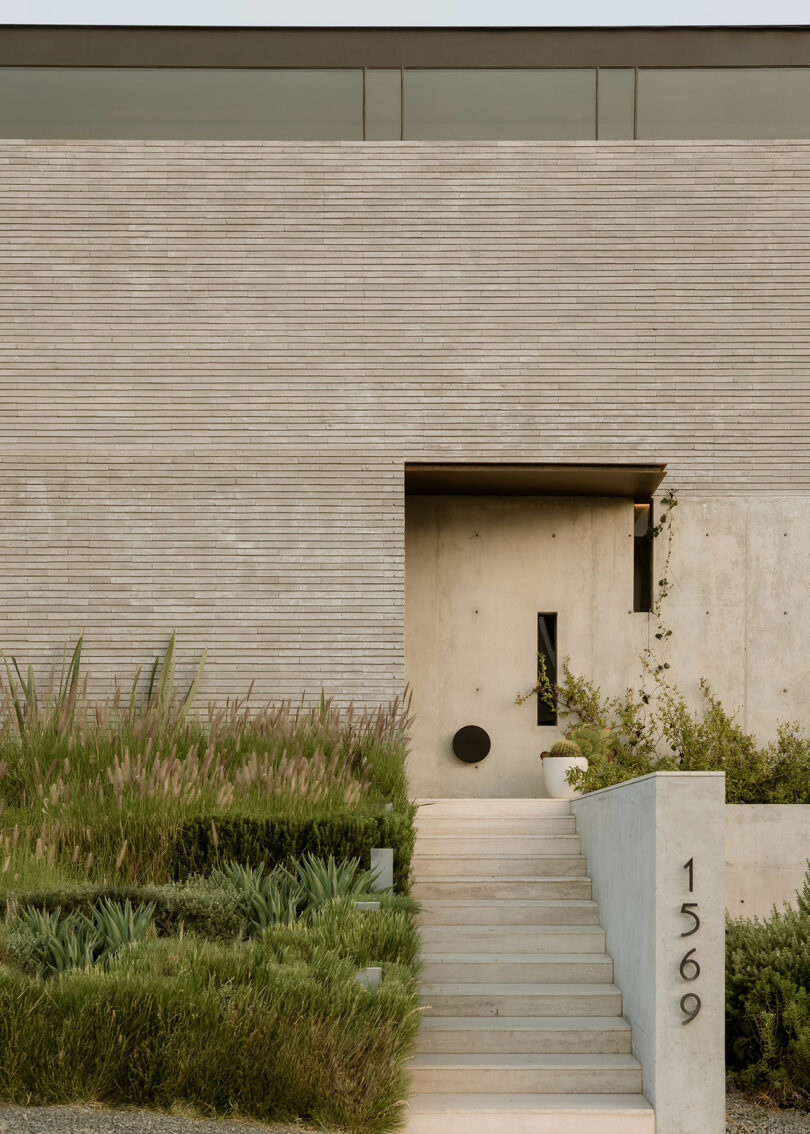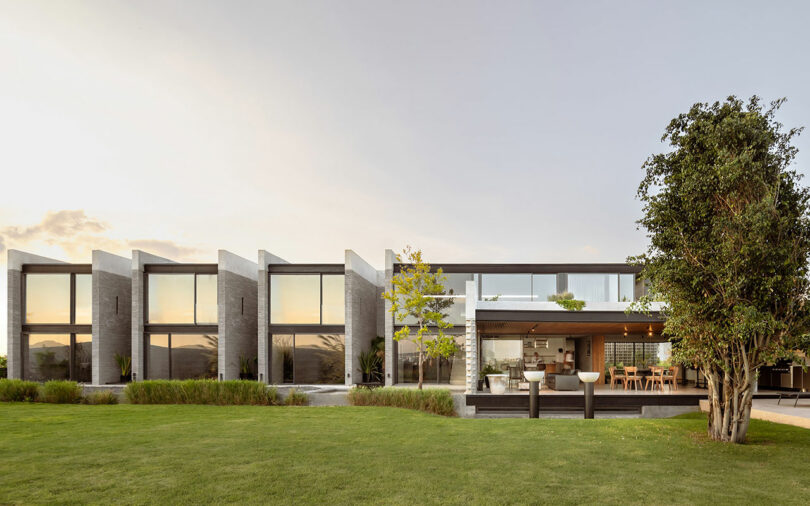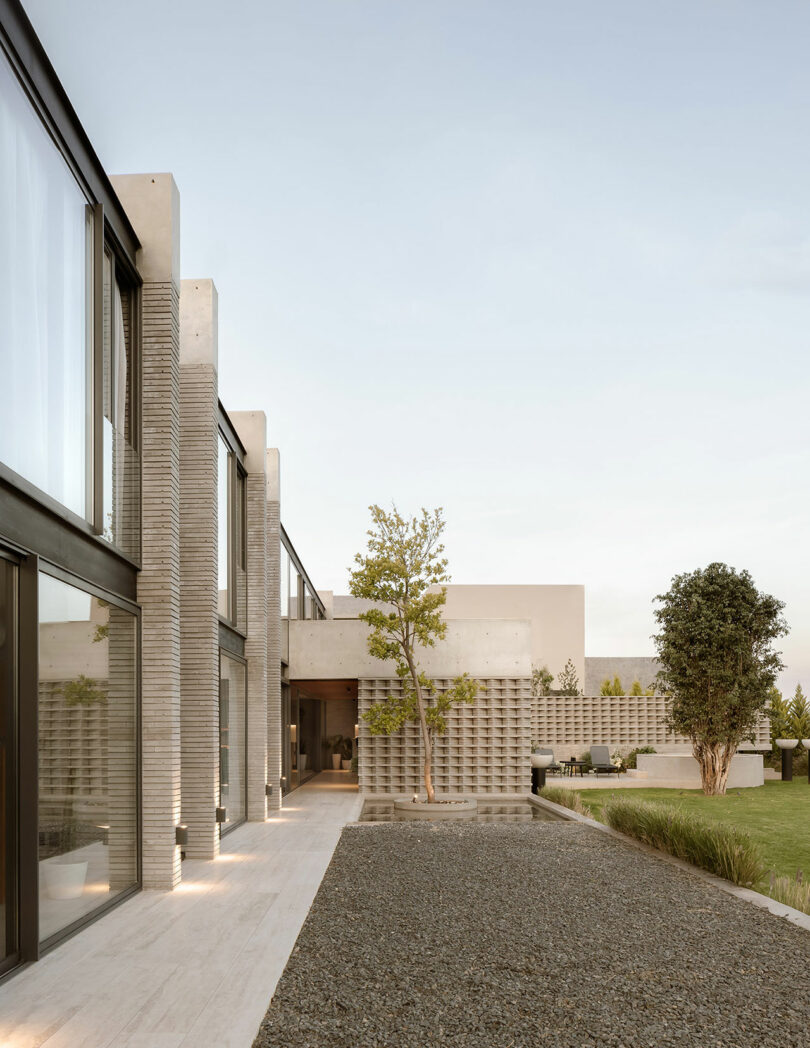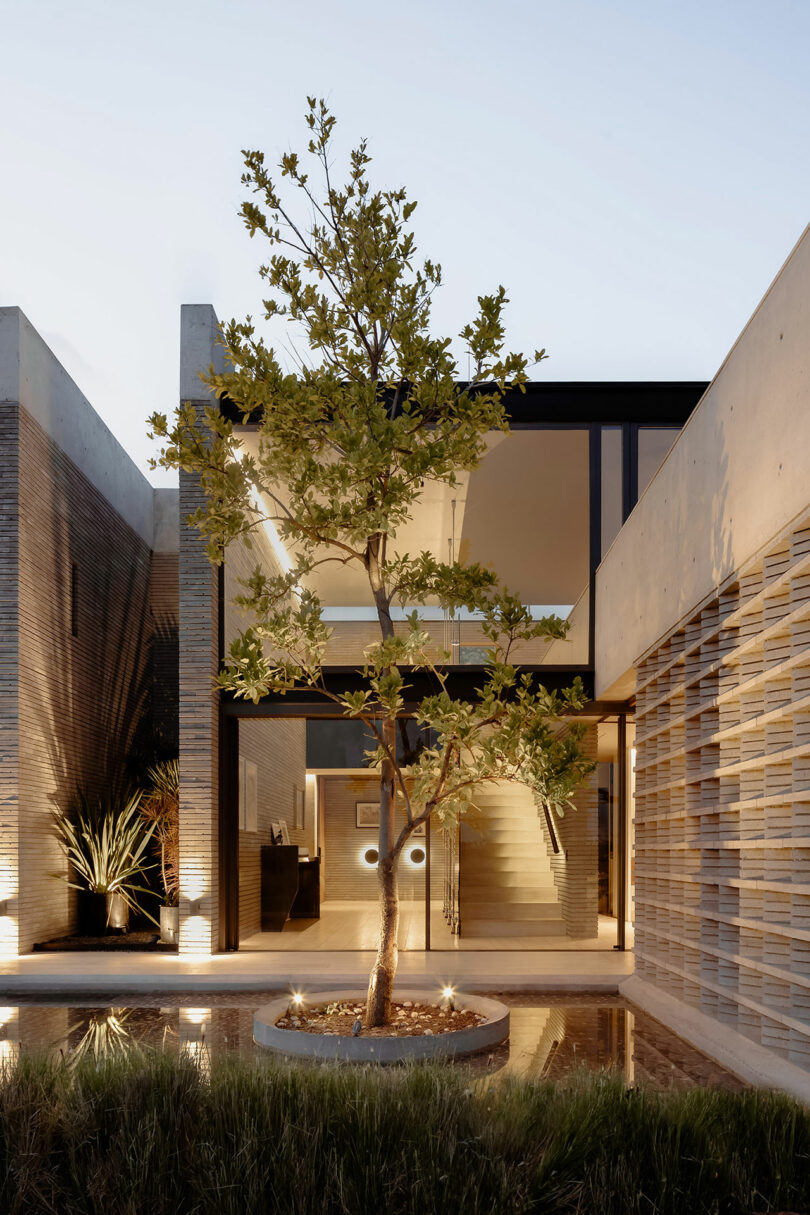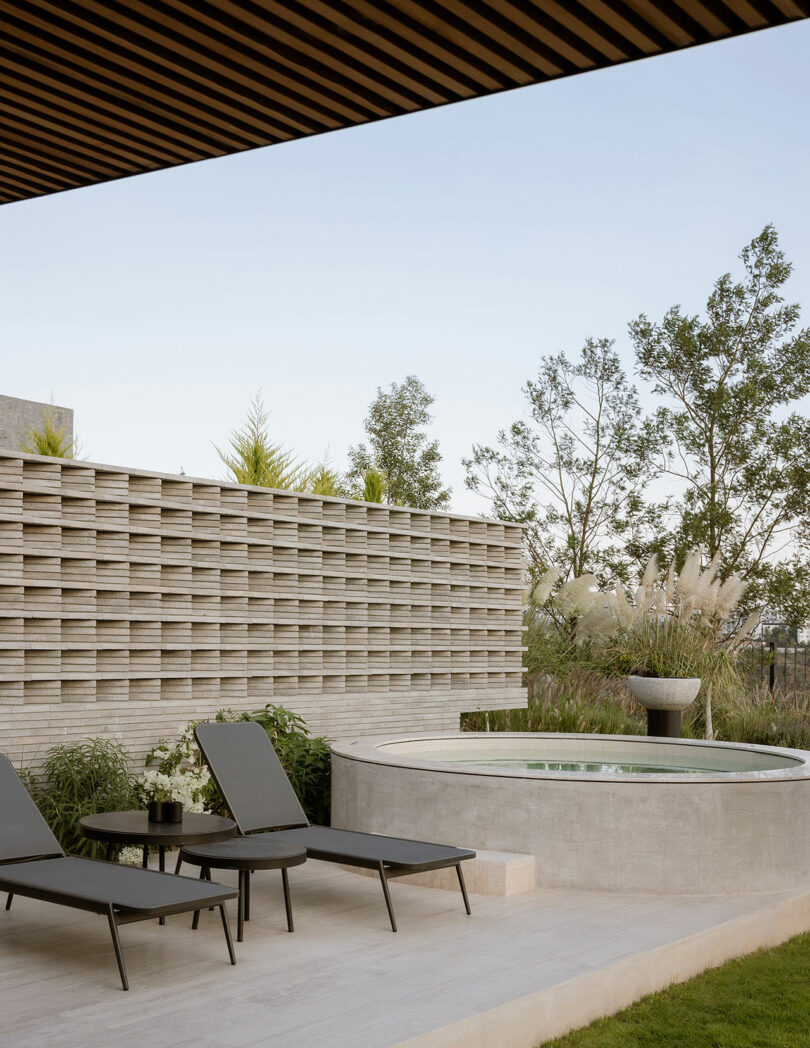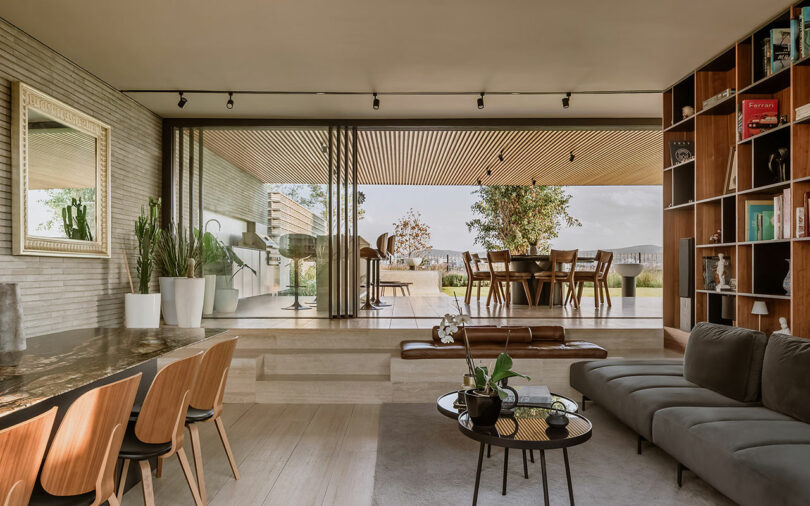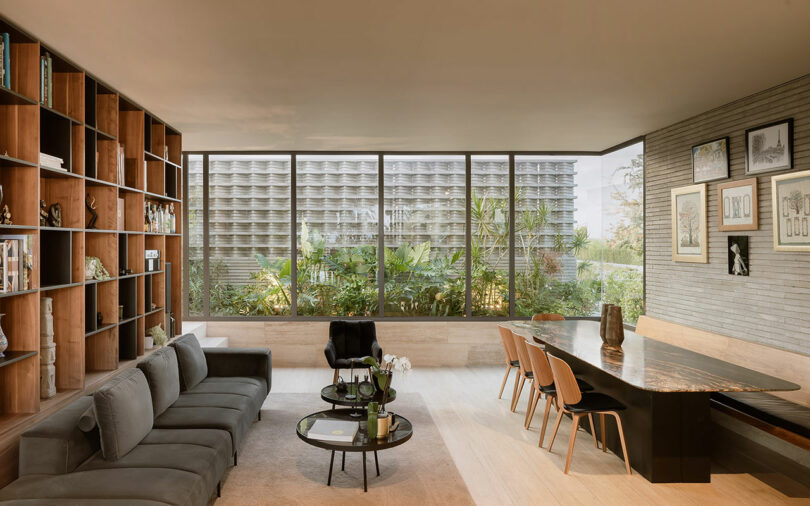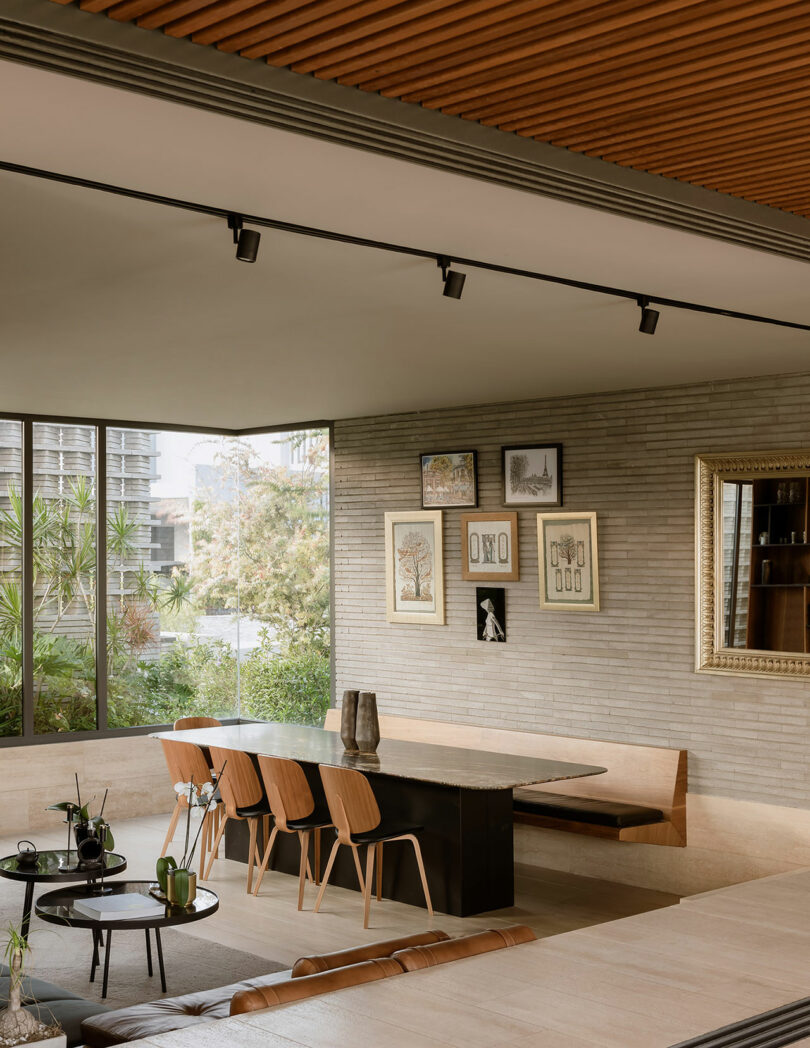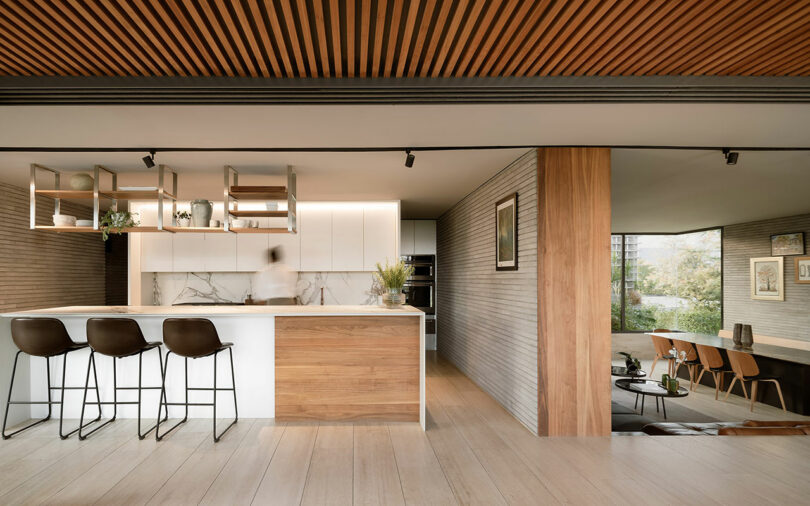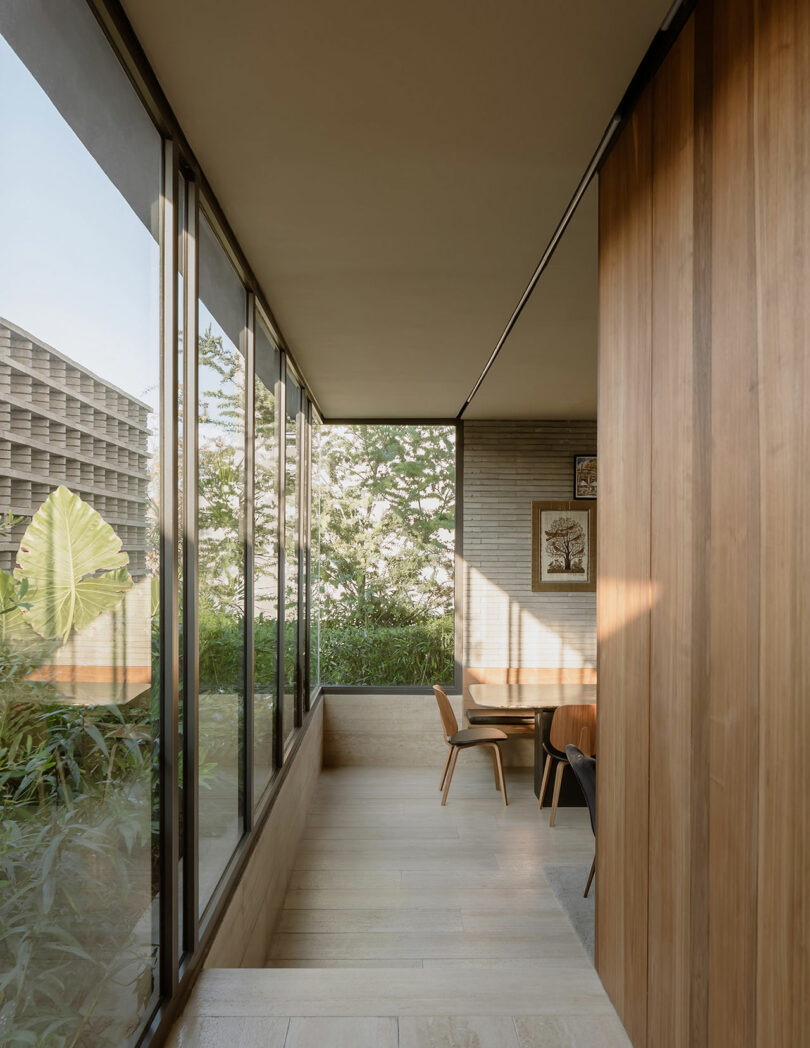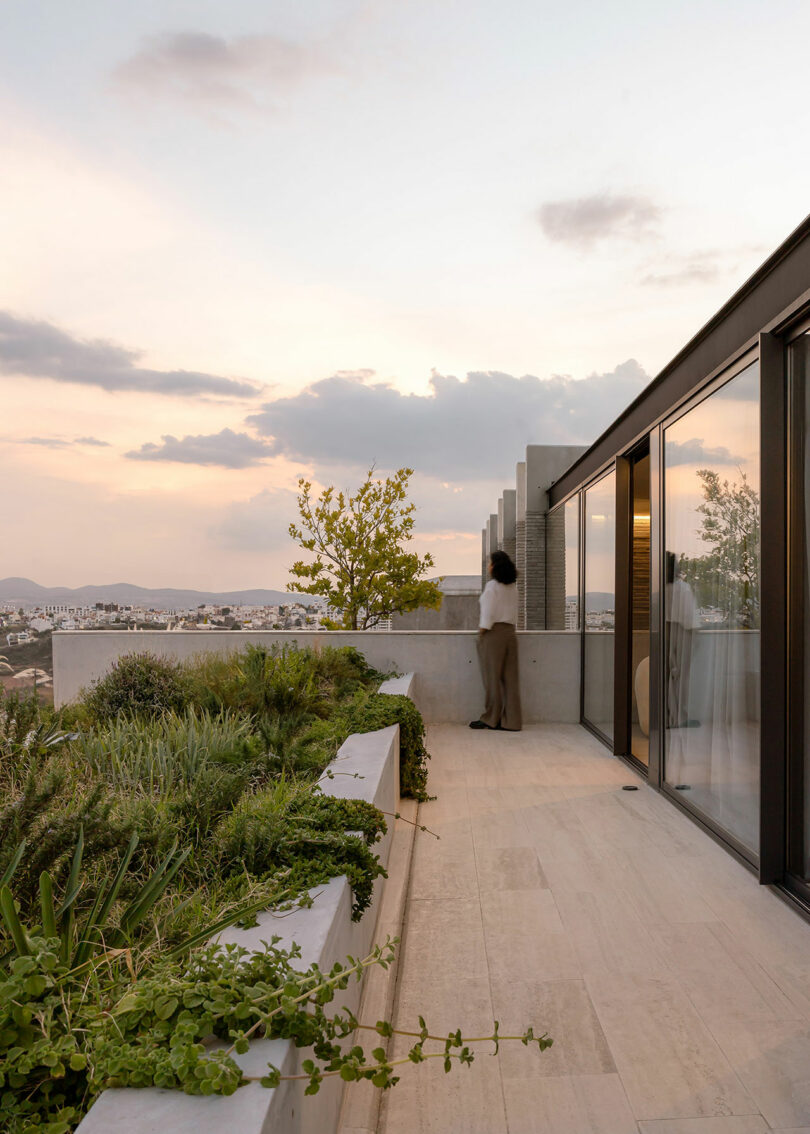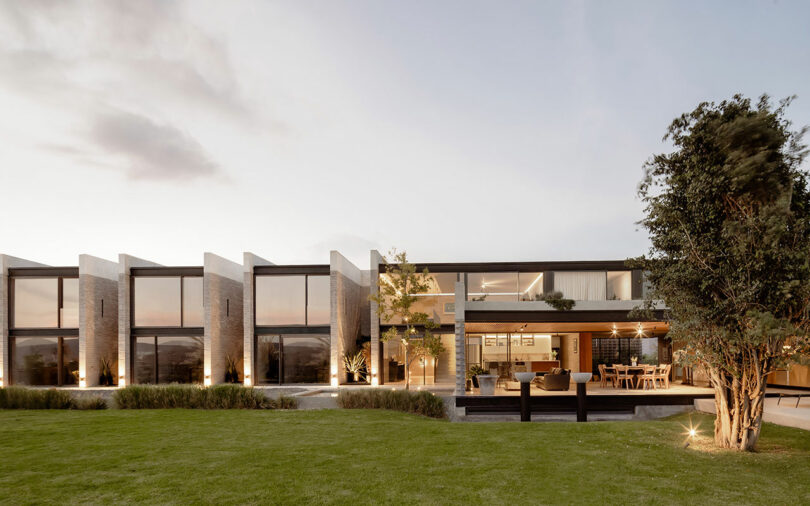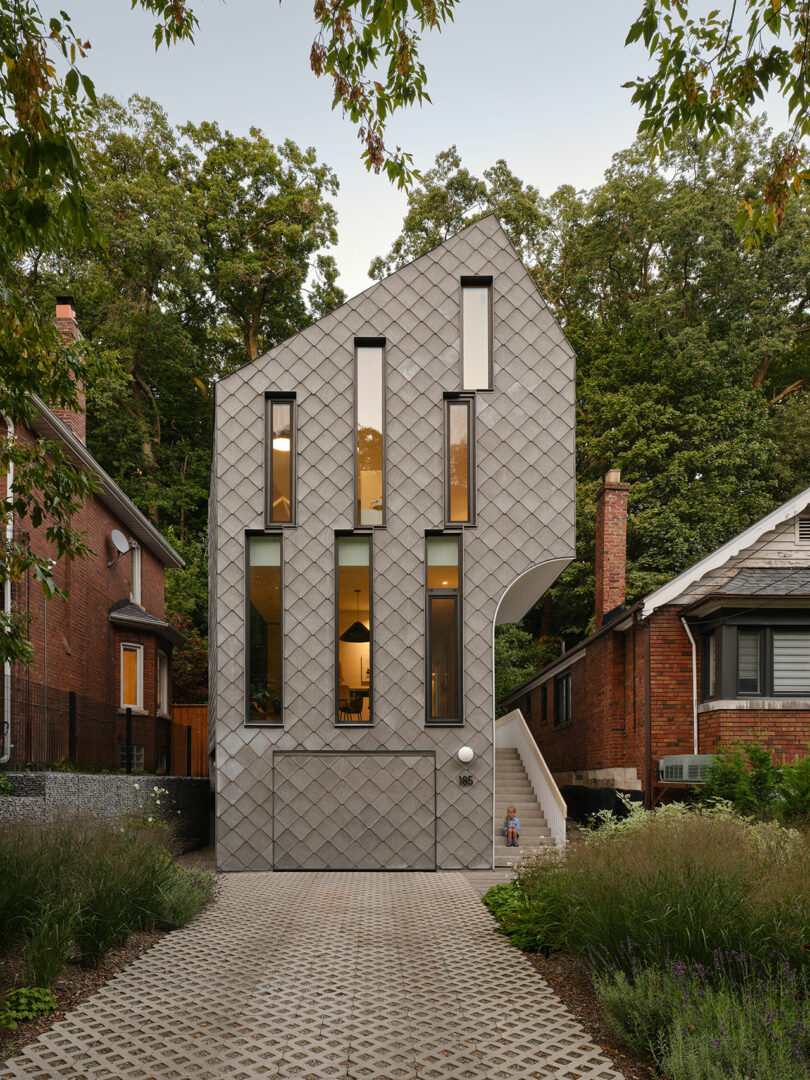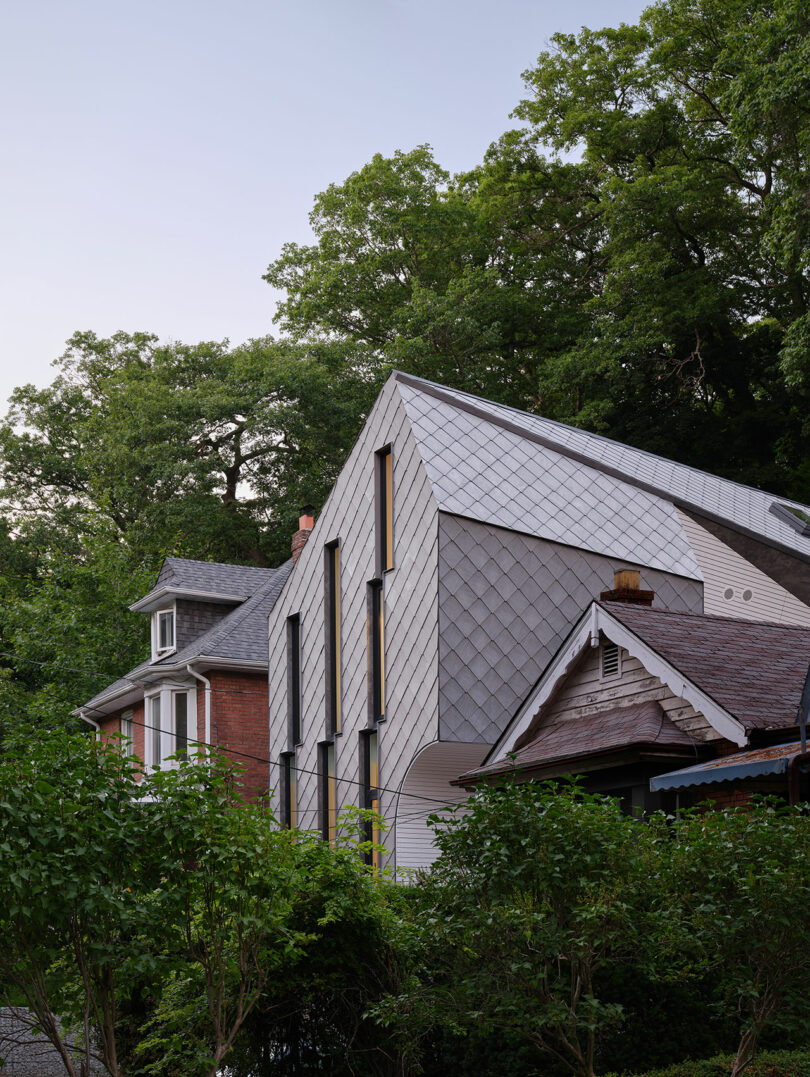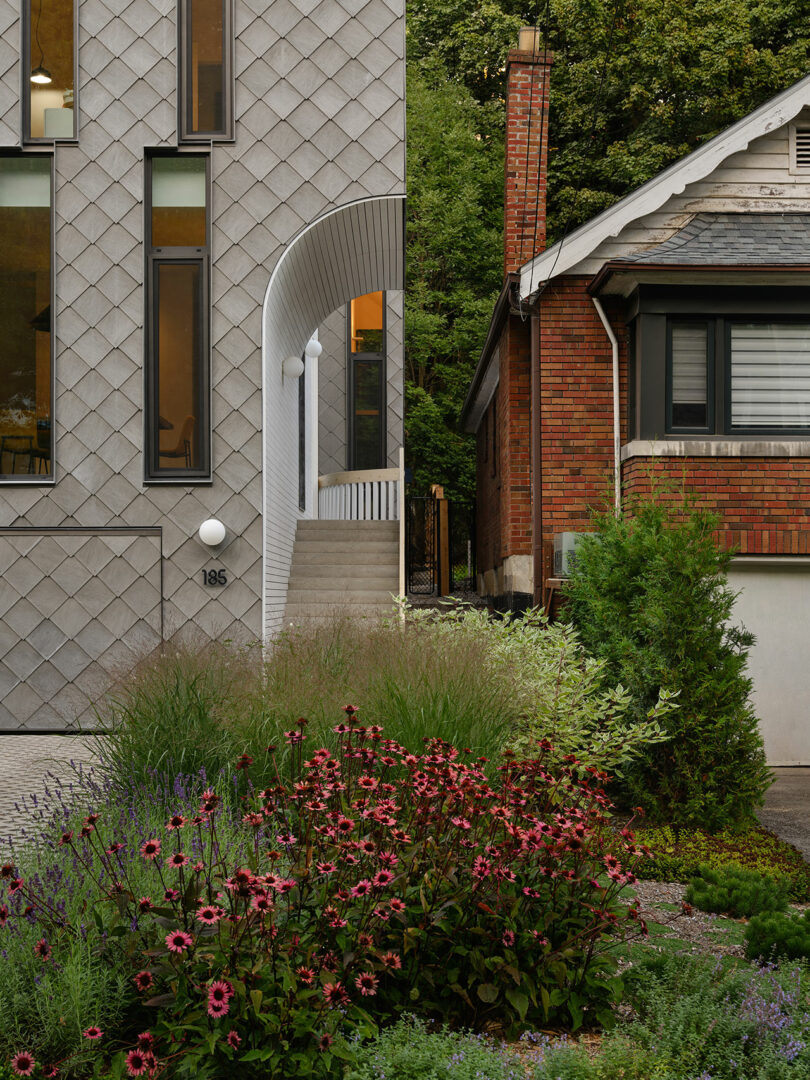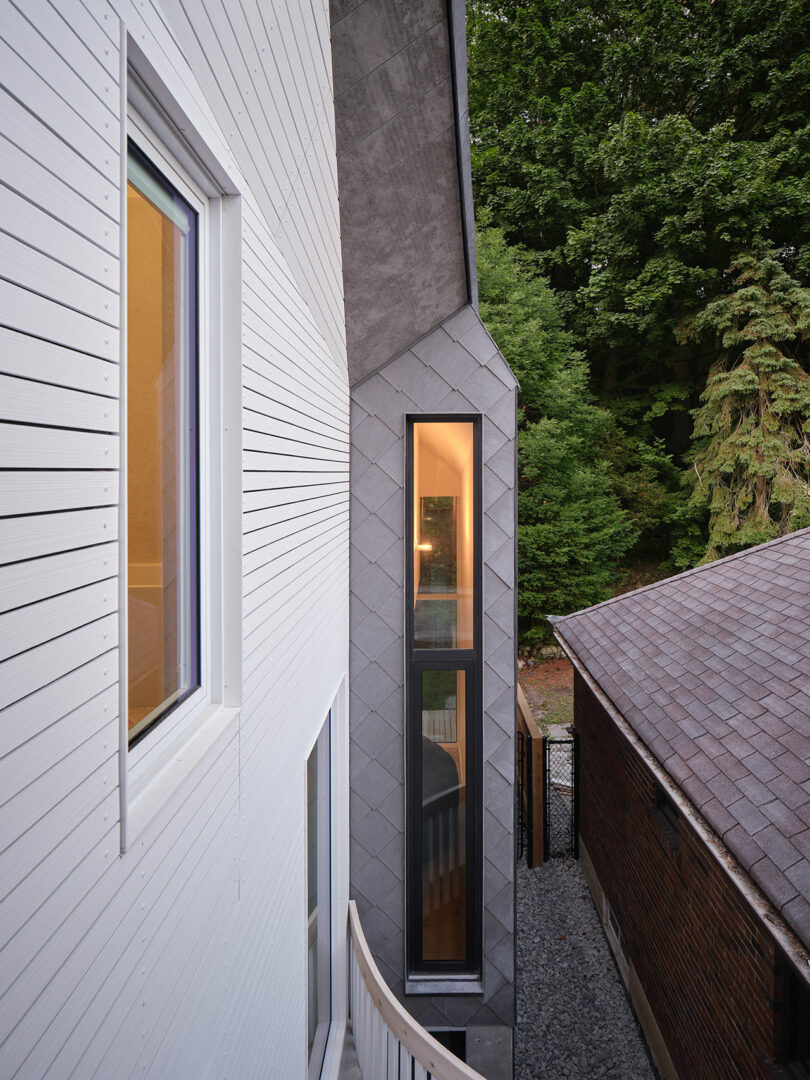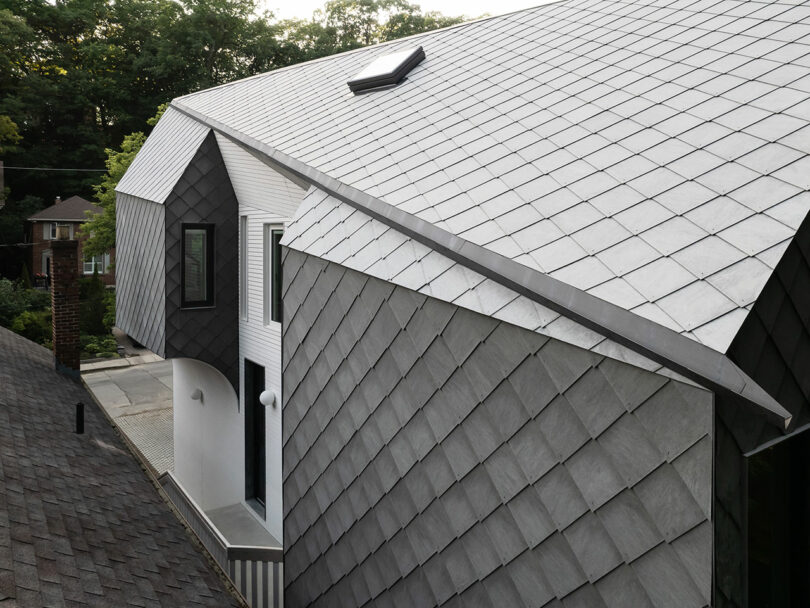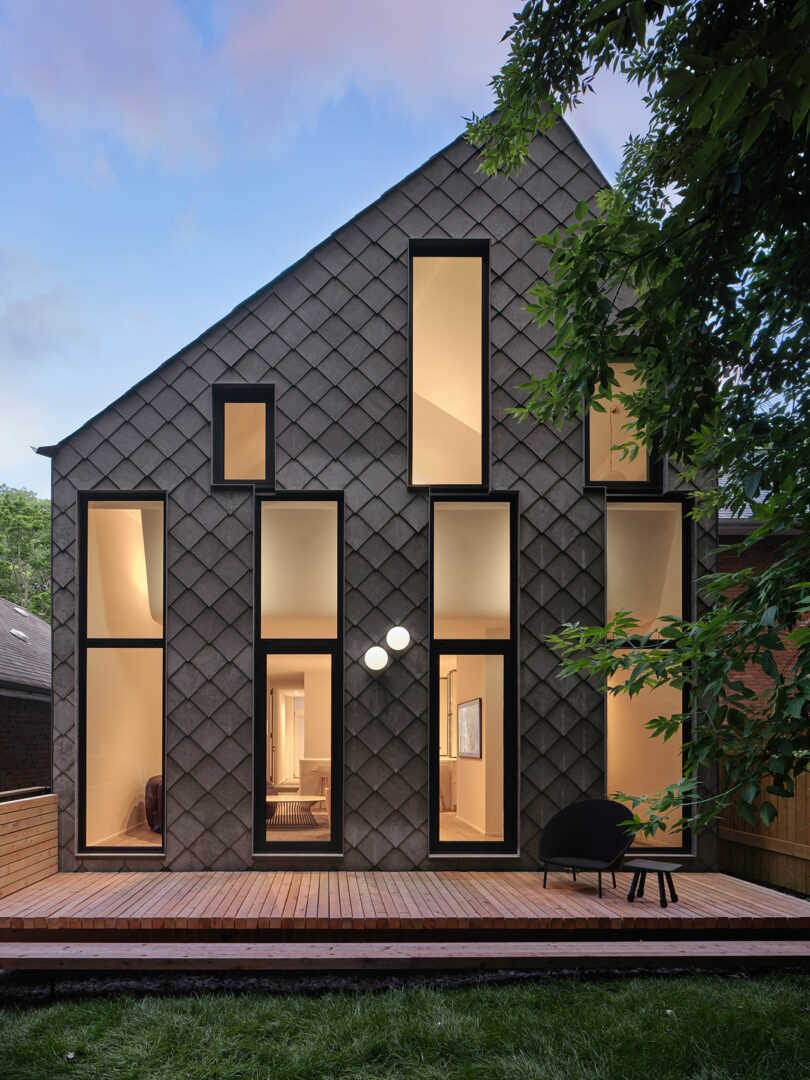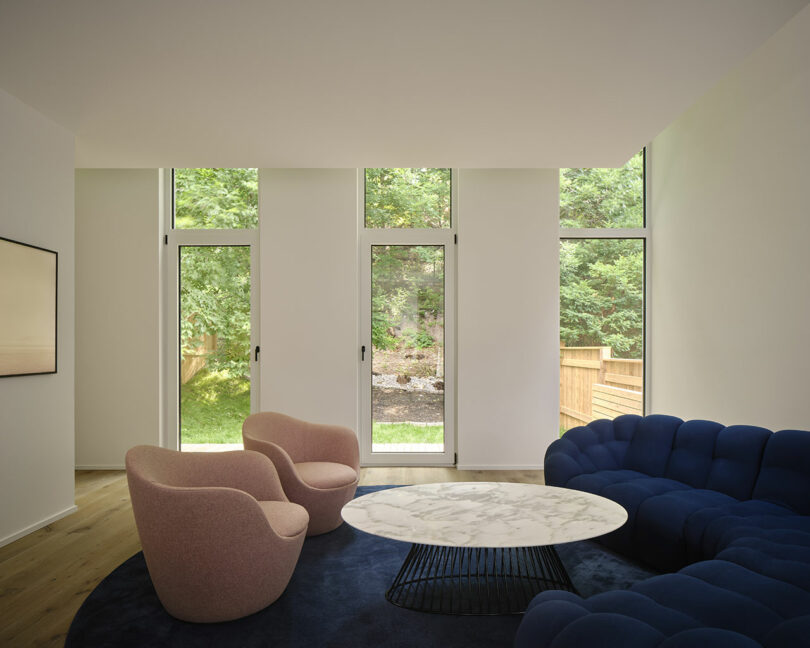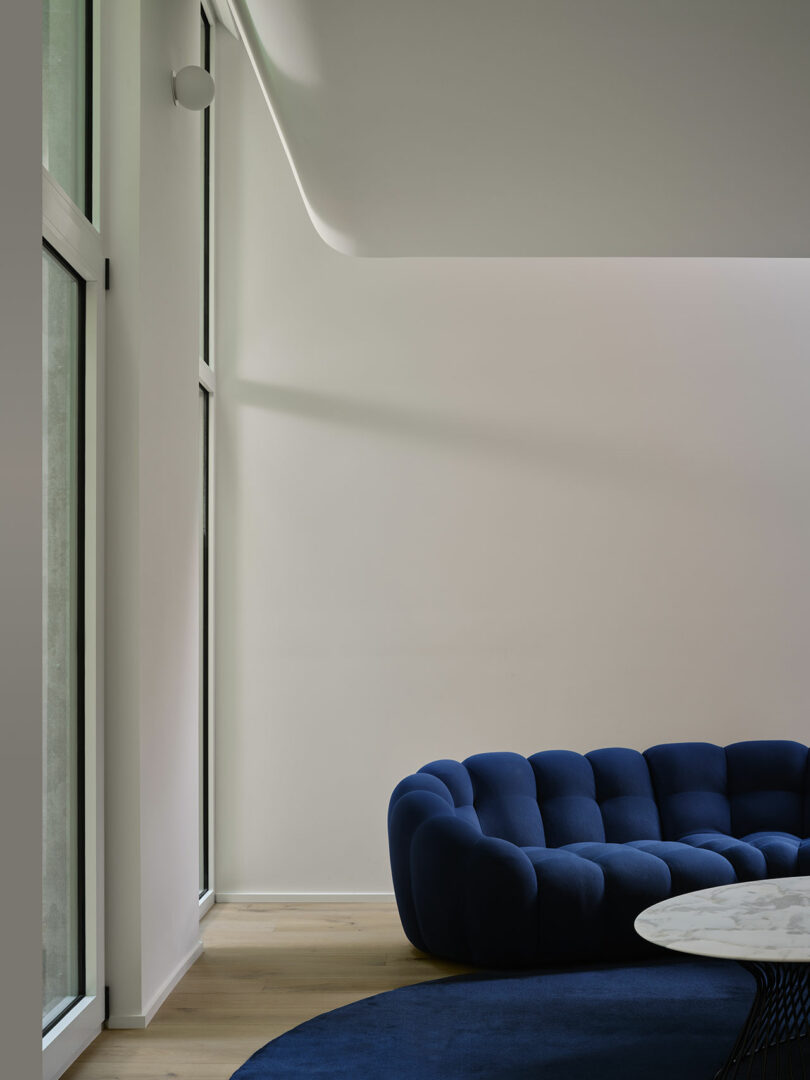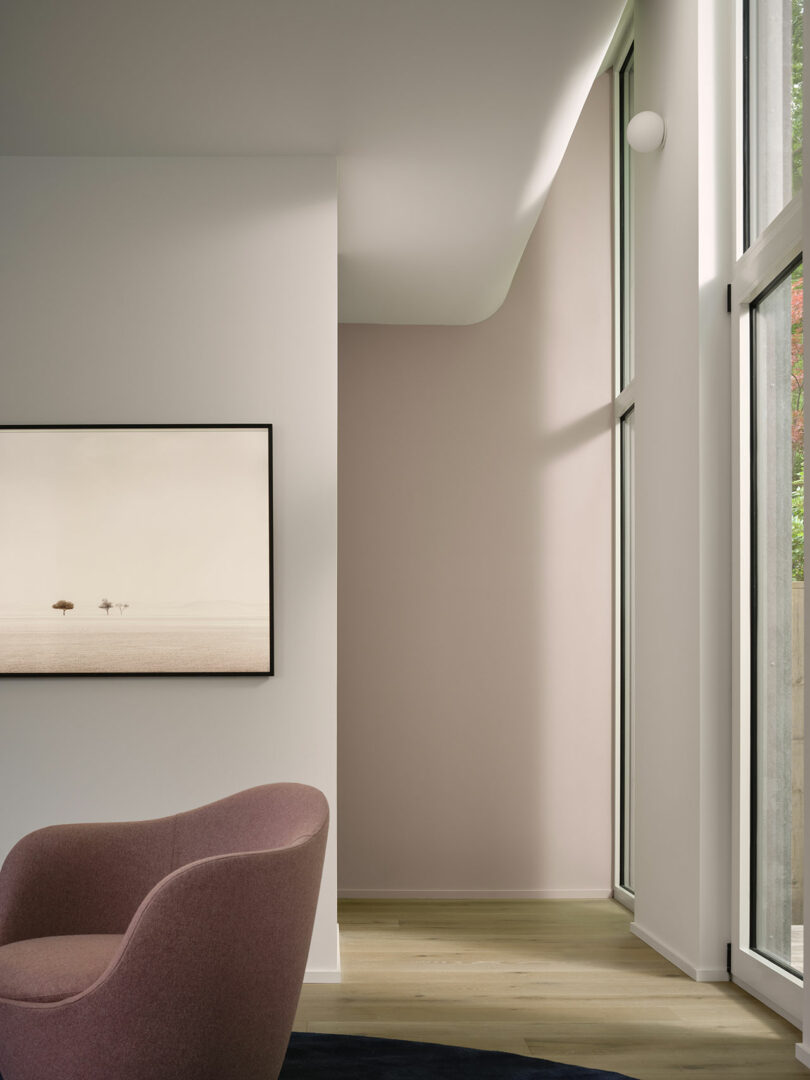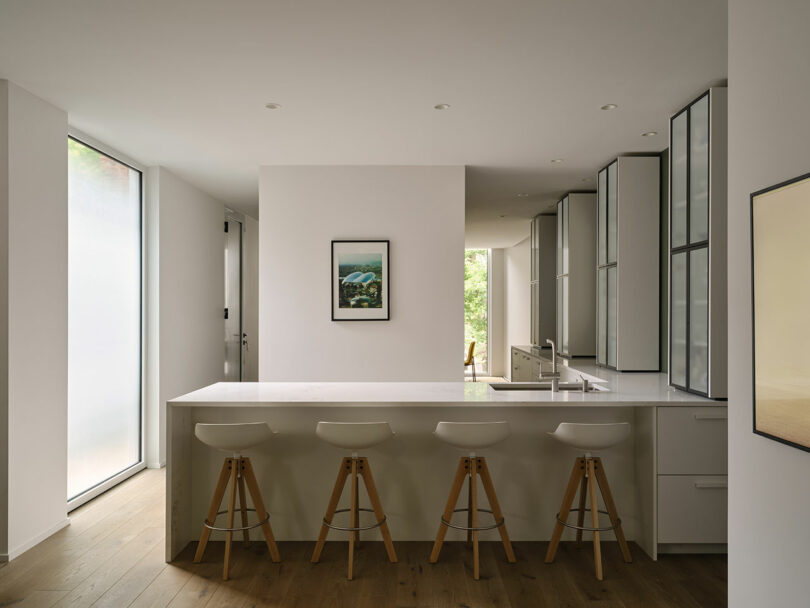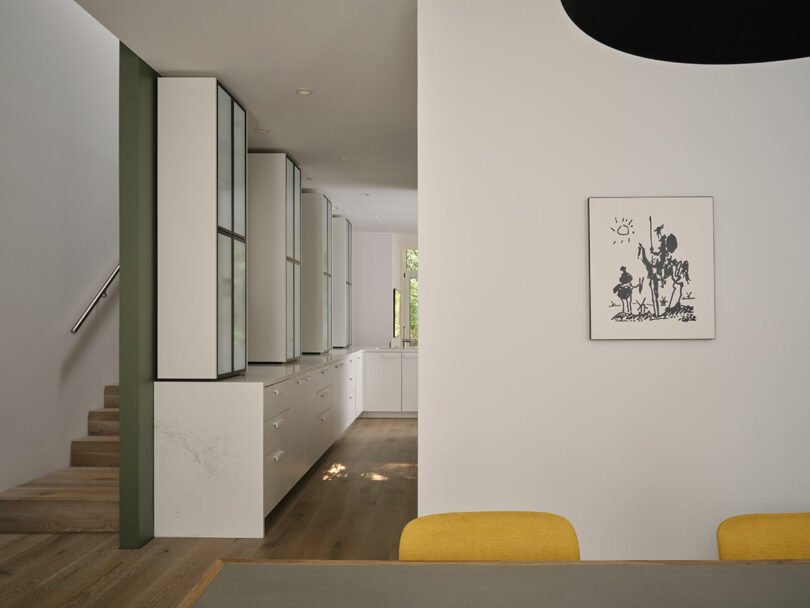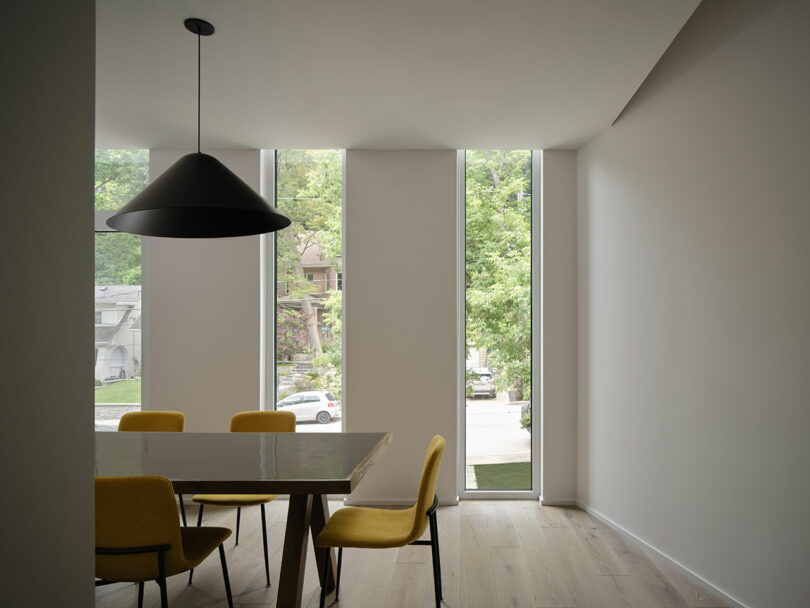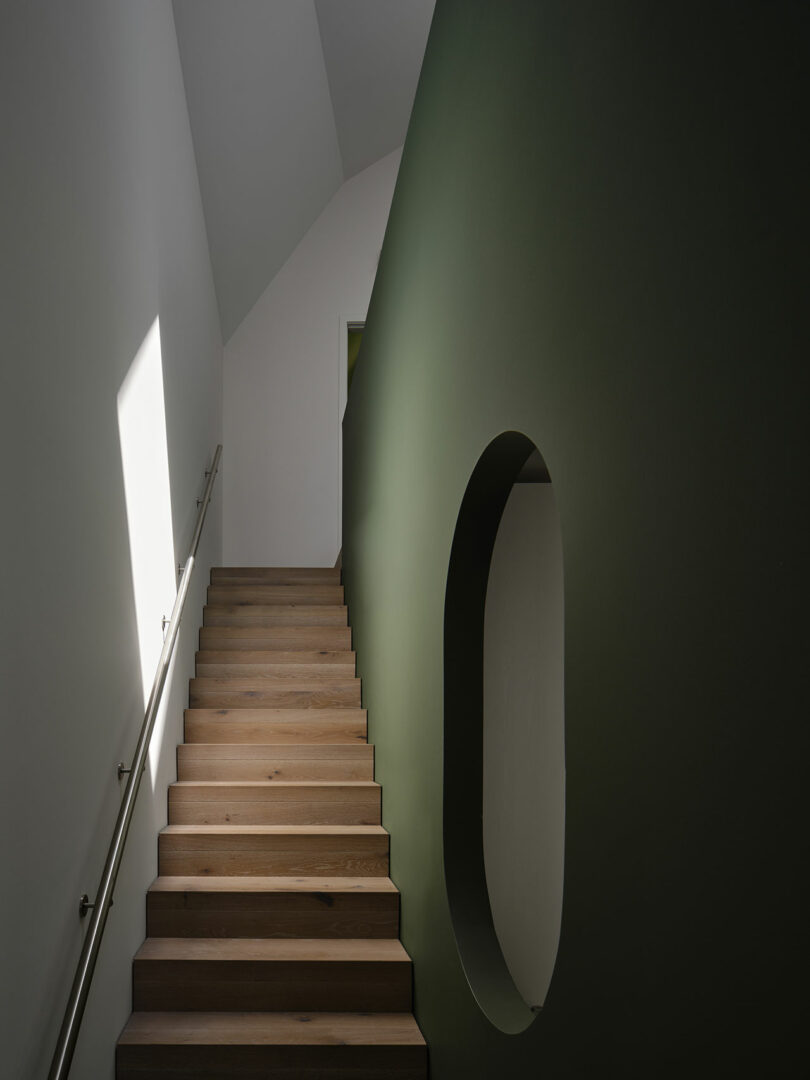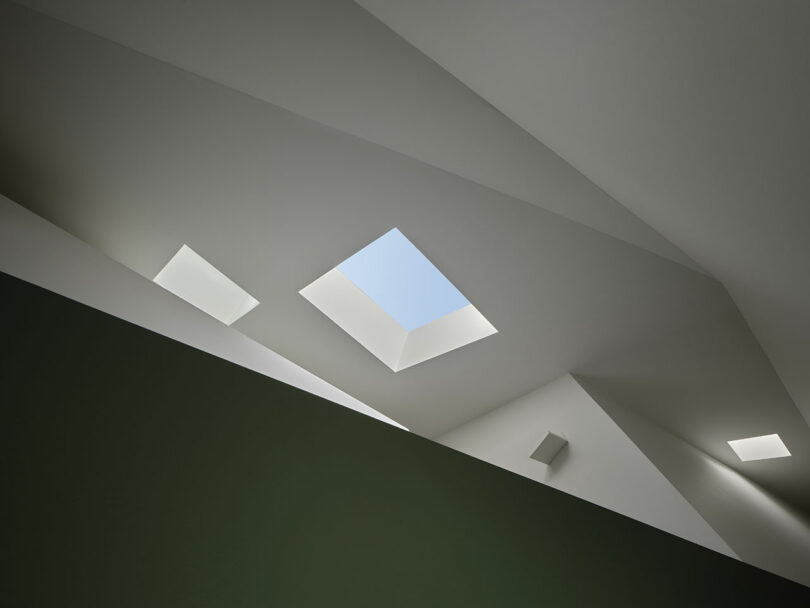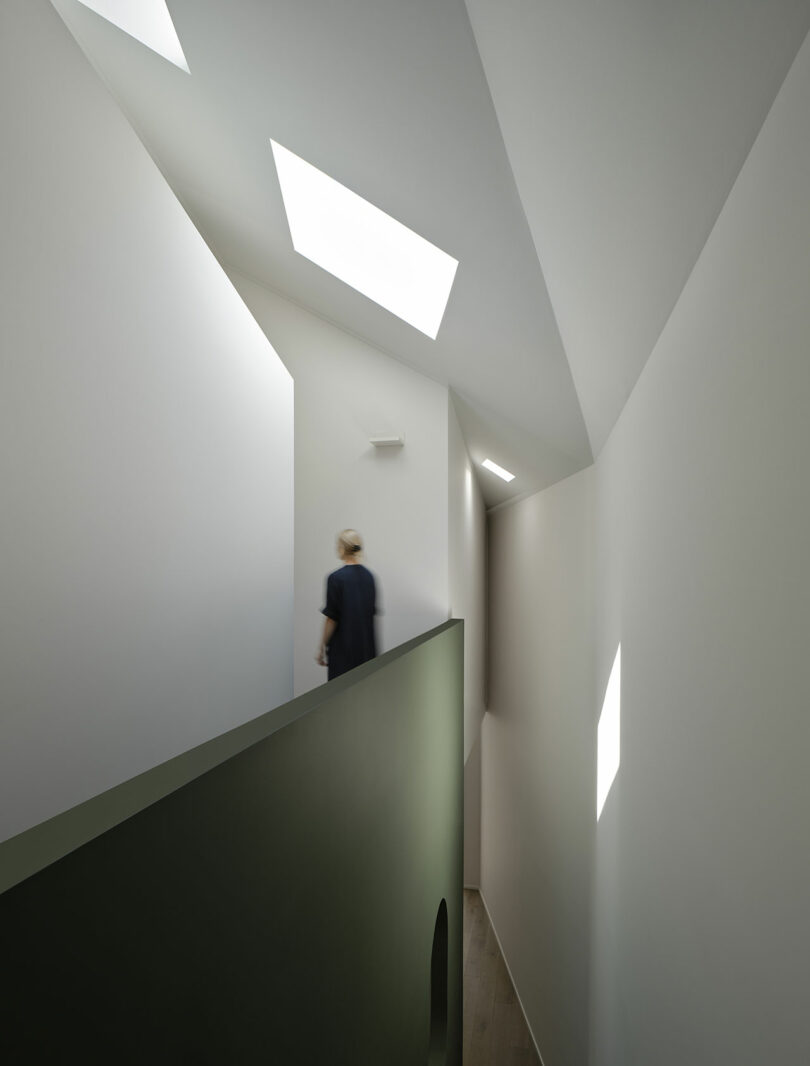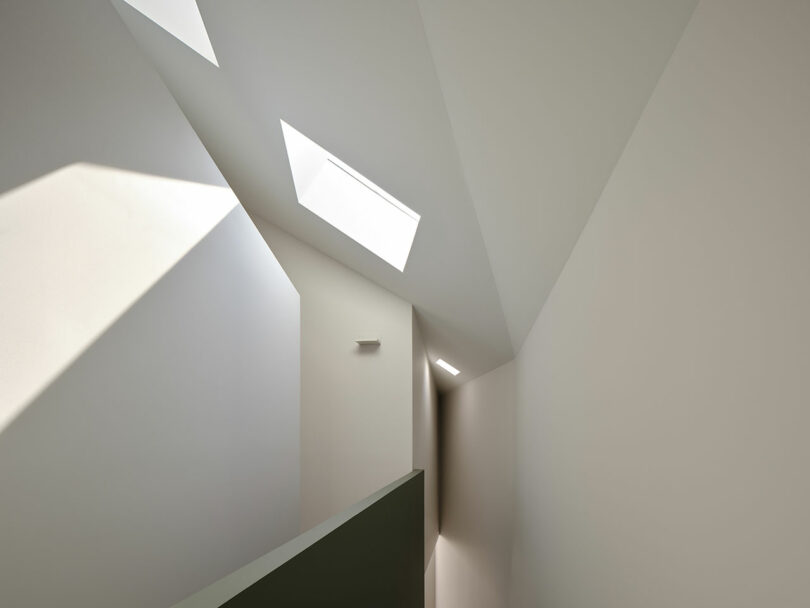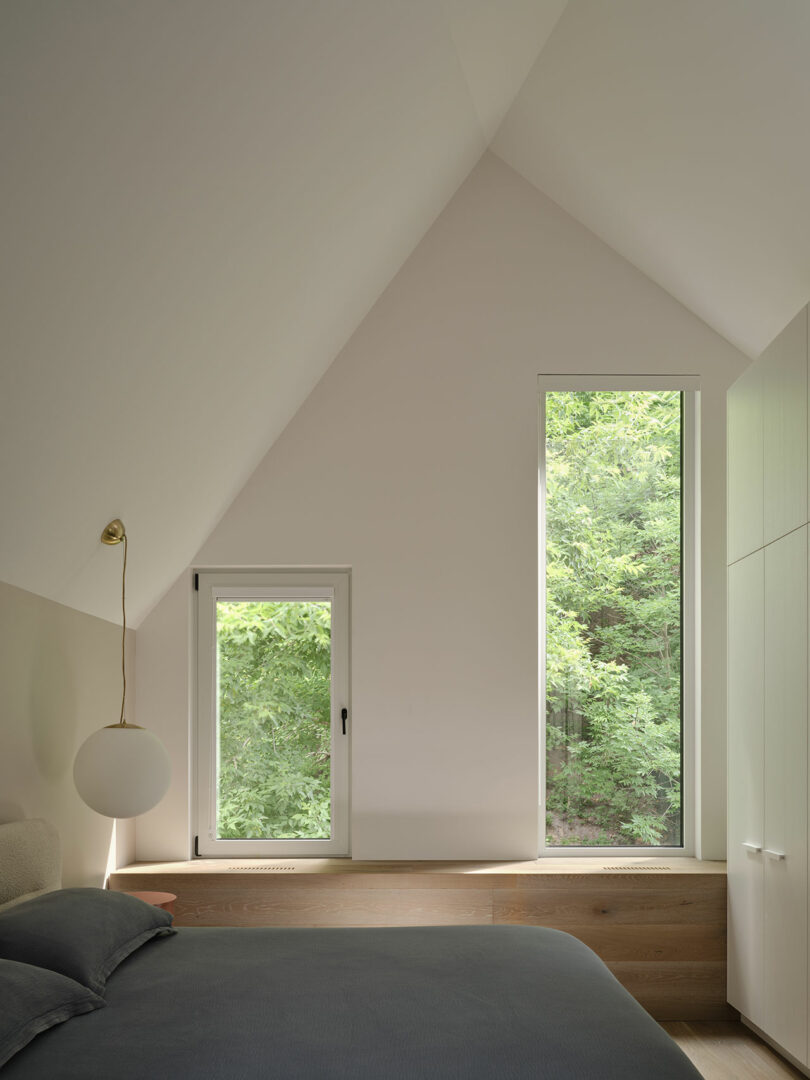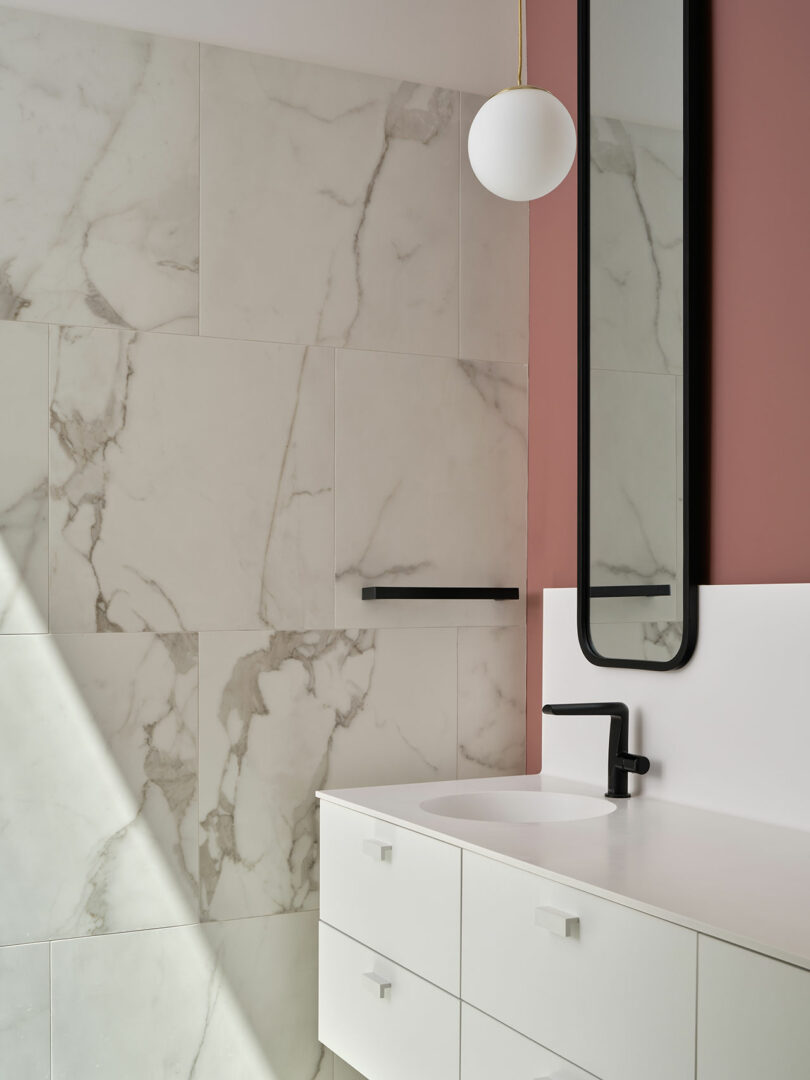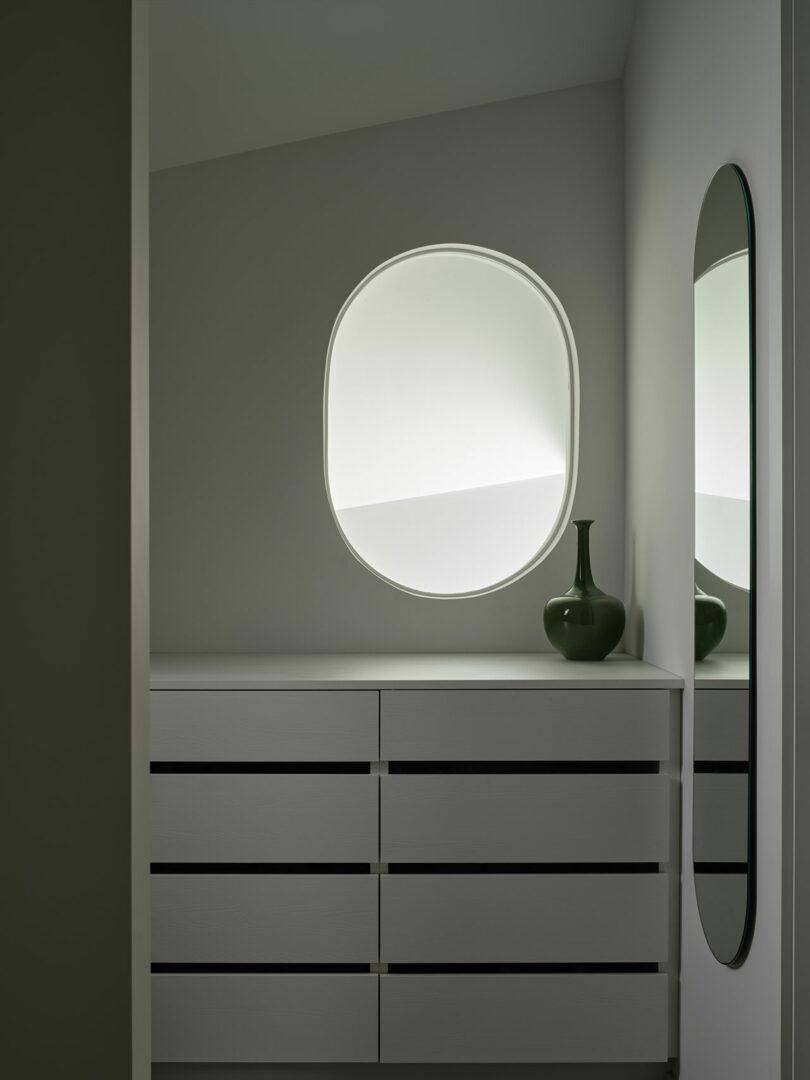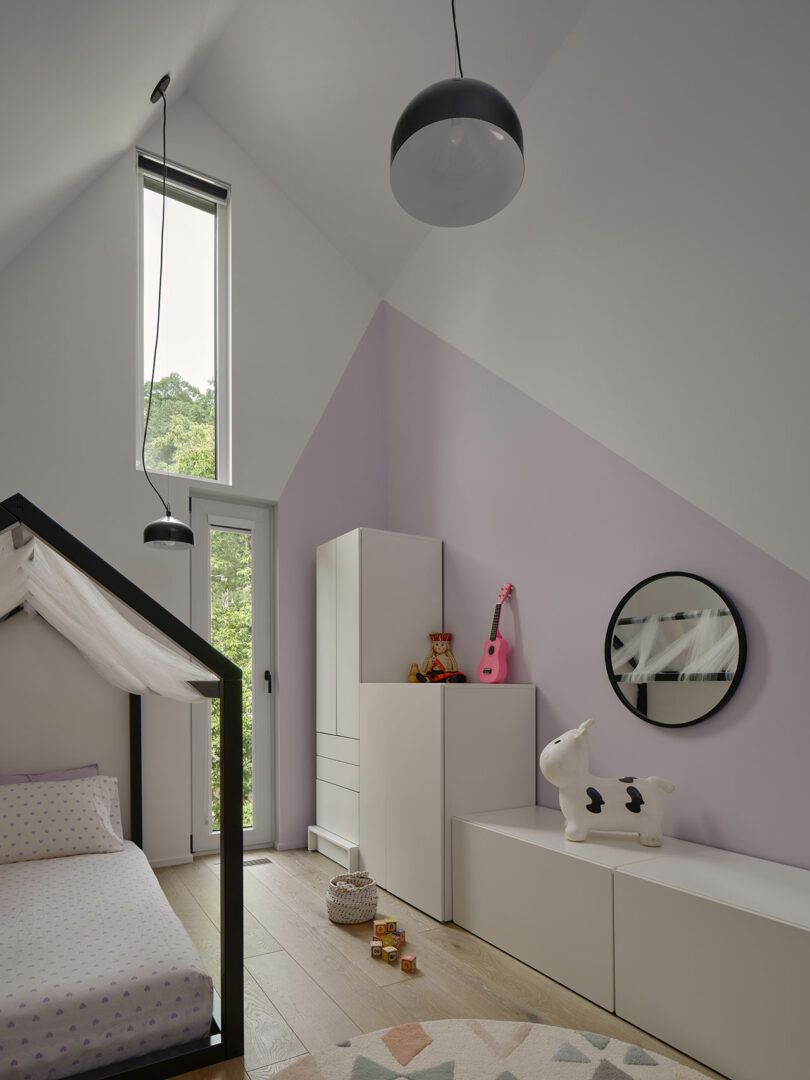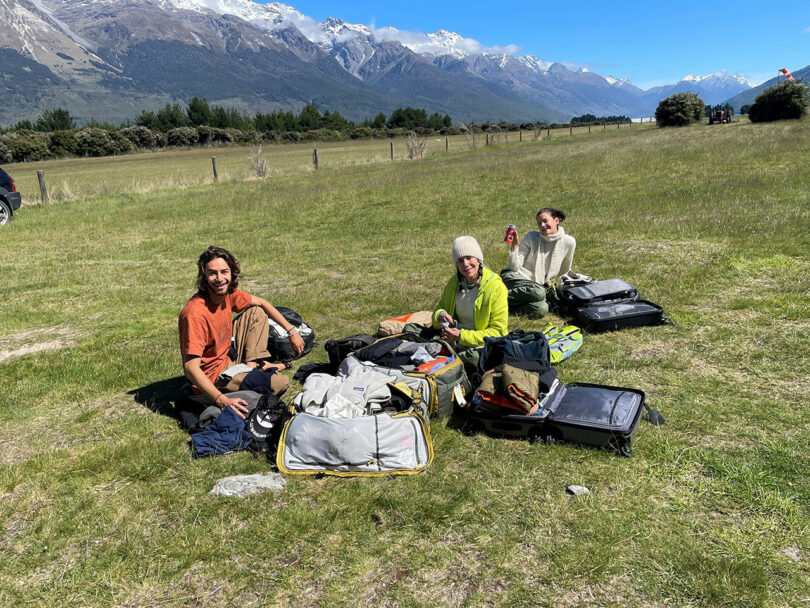Category: Architecture
Boundless Residence Merges Natures With Modern Living Spaces
[ad_1]
Located by Green Island Lake in Foshan City, Guangdong, China, the Boundless Residence, designed by c.dd, embodies the philosophy of “Limited yet Boundless.” The design seeks to merge the tranquility of nature with modern living spaces, creating an environment where physical comfort and spiritual rejuvenation coexist. Rather than adhering to the rigid boundaries of traditional homes, c.dd adopted a fluid, open-plan layout that allows for an uninterrupted flow between different spaces. The design eliminates physical barriers, ensuring that each area – from the entrance to the living room, dining room, kitchen, and study – blends seamlessly with the next. This open layout transforms the home from a static space into a dynamic, ever-evolving environment that mirrors the fluidity of life itself.
This sense of openness is not only physical but also conceptual. The design reimagines the purpose of each space, encouraging residents to interact with their environment in different ways. Whether watching a movie, reading a book, entertaining guests, or simply enjoying the view of the lake, every corner of the residence adapts to the needs of its occupants, offering endless possibilities for relaxation, creativity, and connection. In doing so, c.dd has created a home that is more than just a place to live – it is a canvas for life’s moments, shaped by the people, activities, and time spent within it.
Inspired by nature, the design incorporates curved lines, as reflected in Antoni Gaudí’s quote, “There are no straight lines or sharp corners in nature. The straight line belongs to men, the curved line belongs to God.” In keeping with this philosophy, c.dd incorporated gentle, flowing curves throughout the design, from the rounded ceilings to the soft edges of the furnishings. This approach creates a warm, inviting environment that echoes the organic forms found in nature, softening the overall aesthetic of the home.
The curves are complemented by concealed, ambient lighting, which enhances the serene atmosphere of the space. Gentle illumination pours from the curved ceilings, bathing the interiors in soft light that subtly shifts with the time of day, creating a calming visual experience that fosters a sense of peace. The use of natural materials – wood, stone, and fabric – reinforces the connection to the surrounding landscape, blending the interior spaces with the natural environment outside.
A carefully selected color palette further enhances the residence’s harmonious ambiance. Muted earth tones dominate the design, while accents of deep blue and bright yellow add vibrancy. This restrained yet colorful approach infuses the space with energy and personality.
The project also reflects a deep understanding of human needs. Every detail is thoughtfully designed to create a space that resonates with its inhabitants’ emotional and physical requirements. For example, the primary bedroom features a custom wooden table that serves as both a functional piece and a focal point of artistic expression. The result is a personalized sanctuary that promotes creativity and contemplation.
Green Island Lake is renowned for its rich biodiversity and scenic beauty. Surrounded by towering camphor, maple, and banyan trees, and centered around a “heart-shaped island” that serves as a sanctuary for rare herons, the location evokes a sense of peace and rejuvenation. At dawn and dusk, the skies above the lake come alive with the graceful flight of thousands of herons, creating an awe-inspiring natural spectacle often described as a “paradise of birds.”
To see more projects by c.dd, click here.
Photography by Jack Qin.
[ad_2]
Source link
A Modern Home Inspired by Boat Design
[ad_1]
When designing a new home along a scenic waterfront, architects face the challenge of creating both privacy and optimal views. This is particularly true in neighborhoods where narrow, elongated plots are tightly packed along the shore. A recent project in East Hampton, New York, the Three Mile Harbor residence by Bates Masi + Architects, exemplifies a creative response to these constraints, transforming them into opportunities for innovation.
In a setting characterized by lots that are much deeper than they are wide, and buildings tightly aligned along a single setback line, there is little room for architectural flexibility. Moreover, zoning laws restrict each structure’s height based on its distance from the property line, further compressing the possible building envelope. In this context, a builder and mariner envisioned a home that would reflect the efficient design of the boat he once lived on, while also tackling the unique challenges of the site.
The solution devised by the architects revolves around a series of privacy walls, carefully configured to maintain seclusion while maximizing exposure to the harbor views. These walls are angled and gradually increase in height as they extend towards the water, conforming to both the height regulations and the natural slope of the land. This strategic arrangement allows the home to fully engage with the waterfront, while effectively shielding it from neighboring properties.
Inside, the layout emphasizes compactness and efficiency, with each room arranged in a logical sequence to make the most of the available space. Bedrooms positioned towards the rear of the home are designed with private courtyards, offering access to natural light, fresh air, and serene views of the sky and tree canopies. These courtyards also serve as extensions of the interior space, complete with outdoor showers and seating areas, creating a sense of calm and connection to the outdoors. At the heart of the home, a central spiral staircase runs through all three levels, drawing light into the core and illuminating spaces without compromising privacy.
The distinctive copper cladding of the privacy walls adds both functionality and a unique aesthetic. Designed to look like oars, the copper pipes are set in a pattern that modulates the flow of light and air, while also adding a dynamic visual element that will evolve with time. The material will gradually develop a patina, blending seamlessly into the natural surroundings and supporting the growth of nearby vegetation. This use of copper not only enhances the architectural design but also contributes to the landscape, as the mineral deposits nourish the soil, encouraging lush greenery.
To view more projects from Bates Masi + Architect, click here, and for more information on the firm, head to batesmasi.com.
Photography courtesy of Bates Masi + Architects.
[ad_2]
Source link
Casa Catedral Utilizes Custom Blocks for Its Monolithic Look
[ad_1]
Located in Santiago de Querétaro, Mexico, Casa Catedral is a bold architectural project by Laboratorio de Arquitectura, spanning over 8,600 square feet. The project emphasizes materiality, focusing on economic efficiency and sustainability, while embracing a distinctive design approach that harmonizes with its natural surroundings.
From the front, Casa Catedral appears to be a monolithic structure with no views to the inside. Step around back and the home opens up with walls of windows and exterior spaces that extend from the interior rooms. The residence is made of custom-designed blocks designed to serve as both structural and aesthetic elements. Inspired by the form of elongated ingots, these blocks were meticulously developed to minimize vertical separation and highlight horizontal lines. The incorporation of a tongue and groove system ensures precise alignment and structural stability, while the blocks’ cavities allow for the seamless integration of electrical and plumbing systems, enhancing both the functionality and efficiency of the building.
The layout is organized along a linear axis, featuring four distinct volumes interconnected by a central corridor. This configuration artfully separates the public and private areas, ensuring both a sense of intimacy and openness. The building’s thoughtful orientation takes full advantage of its southeast-facing position, offering sweeping views of the surrounding canyon landscape and fostering a close connection with the outdoors.
The central connector volume serves as the heart of the residence, featuring a double-height entryway and staircase that create an inviting and dynamic space. This area uses tinted glass elements to mirror the surrounding greenery, further blurring the line between indoor and outdoor environments.
On the ground floor, the main volume houses communal spaces like the sunken living room and dining area, which seamlessly open to a terrace and garden. The upper level contains the primary suite, complete with a walk-in closet and private garden, creating a secluded retreat within the home. The other three volumes accommodate a range of functions, including a study, guest rooms, a gym, and secondary bedrooms. These areas are carefully arranged to maximize privacy and natural light, utilizing vertical greenery and latticework to form a sense of division without the need for shared walls.
The residence employs strategic placement of load-bearing walls and grilles to mitigate solar exposure and optimize ventilation, reducing the need for artificial cooling systems and promoting energy savings. The garden-facing facade opens up to the lush landscape, fostering a strong connection to nature, while the street-facing facade remains more closed, ensuring privacy and controlled natural lighting.
To see more from Laboratorio de Arquitectura, follow them on Instagram here.
Photography by Ariadna Polo.
[ad_2]
Source link
A Geometric Home in Toronto Merges With Nature
[ad_1]
In the east end of Toronto, a new architectural project seamlessly blends innovative design with the natural contours of its landscape. The four-bedroom, single-family Neville Park residence, conceived by the Canadian studio Reigo & Bauer, is set within a unique gully that features steep slopes on both the front and rear of the property. The architects have transformed this challenging site into a striking and cohesive structure that stands out while harmonizing with its surroundings.
The home’s tall, vertical structure is a deliberate nod to the towering trees that line the hillside, creating a visual dialogue between the built environment and the natural landscape. The exterior is clad in gray, diamond-shaped tiles that wrap the entire building, including the garage and roof, creating a unified and sculptural volume. To maximize light and privacy, the design features strategic setbacks and angular cuts in the façade, particularly on the south side. This allows for additional windows and an entryway that is both practical and visually distinct.
The use of geometric forms continues on the roof, where triangular facets connect the offset pitch peaks, adding a dynamic element to the structure. Narrow, staggered windows punctuate both the front and back of the home, allowing ample natural light to flood the interior while maintaining a sense of privacy. The dining room, positioned at the front, features windows that extend above the ceiling line, further emphasizing the verticality of the design. In the rear, the living room’s ceiling curves upward, following the line of the elongated windows and drawing the eye toward the wooded hill behind the house.
Inside, the layout is both functional and fluid, with a central block on the entry level housing essential amenities like a powder room, pantry, and storage. This core element helps to organize the surrounding spaces, which flow effortlessly from one area to the next without the need for doors. The kitchen, situated between the dining and living rooms, is outfitted with minimalist white cabinetry, offering a clean and understated aesthetic.
A muted green wall, positioned between the kitchen and staircases, features playful pill-shaped cutouts that allow light and sightlines to connect the upper and lower levels. This wall continues to the upper floor, where it becomes a solid bannister for the skylit corridor that links the bedrooms. The primary suite is located at the rear, offering a serene retreat with views of the natural surroundings. Another bedroom is found in the basement, tucked behind the garage, providing extra privacy and space.
The home’s interior palette is predominantly neutral, with light oak floors and white walls serving as a backdrop for the homeowners’ personal touches. However, moments of color are introduced through select vertical surfaces, such as a pale dusty pink wall in the living room and a terracotta-hued bathroom in the primary suite. Spherical light fixtures, used both inside and out, create a cohesive design language that ties the entire project together.
For more information on Reigo & Bauer, visit reigoandbauer.com.
Photography by Doublespace Photography, courtesy of v2com.
[ad_2]
Source link
Ron Radziner on Earth Food, Travels With Family + More
[ad_1]
Ron Radziner was aware of architecture early on, but one particular Frank Lloyd Wright building in his home state of California piqued his interest. The Hollyhock House was Wright’s first Los Angeles commission, completed in 1921 for his client, heiress Aline Barnsdall. Barnsdall eventually donated the house and surrounding land, which is still a public site today. “I remember being fascinated by the house on the hill when I would visit the park with my family when I was a child,” says Radziner.
Barnsdall’s request for a residence that was essentially half house and half garden is a concept that resonates with Radziner, who envisions seamless spaces. As design partner of the design-build practice Marmol Radziner, he develops solutions that provide a unique architectural identity by forging strong connections between interior and exterior. The firm’s holistic approach includes not only an emphasis on the indoors, but also construction, landscapes, furniture, and other facets.
Radziner fosters relationships with groups and individuals dedicated to improving the community – people are just as important as projects. The architect speaks at universities and conferences, sharing his perspective with students and professionals alike. He also serves on the boards of organizations like the Mojave Desert Land Trust and Facing History and Ourselves.
Even with an ever-full schedule, Radziner still makes time to decompress. After his work is done he likes to stop at the gym for an intense workout. The exercise helps him reduce stress and feel emotionally fresh for the rest of the day.
While the architect looks forward to going to the studio and interacting with clients, if he decided to make a career change it would most likely be for a role in the film world. “I would be happy to attempt to become a cinematographer,” Radziner notes. “So often as I am designing a building, I am experiencing the spaces in my mind, reminiscent to feeling as if I am walking through a film.”
Today, Radziner joins us for Friday Five!
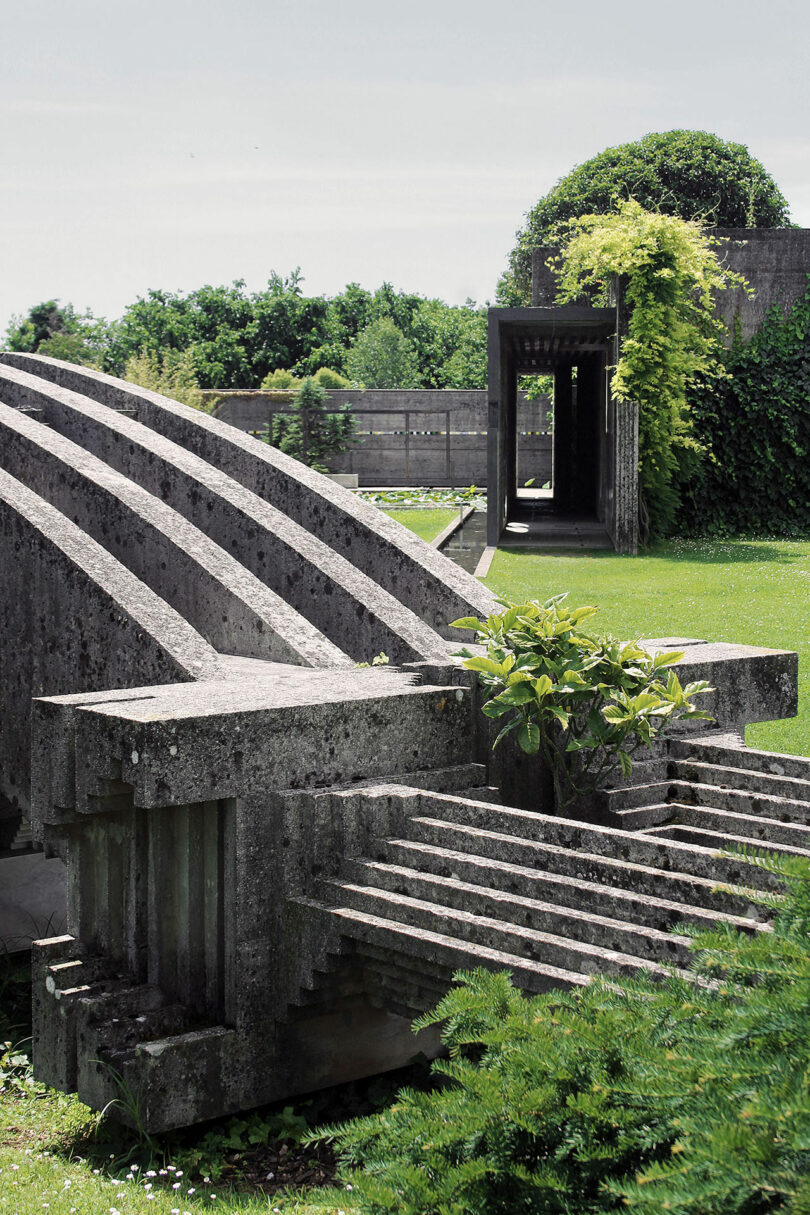
Photo: Trevor Patt
1. Brion Tomb
The private sanctuary near Treviso, Italy, was designed for the Brion family by Italian architect Carlo Scarpa. I had the opportunity to visit a few years after it was completed. Scarpa’s reverential use of concrete, metal, wood, stone, and water in the architecture, accompanied by a moving landscape, create an incredibly memorable experience.
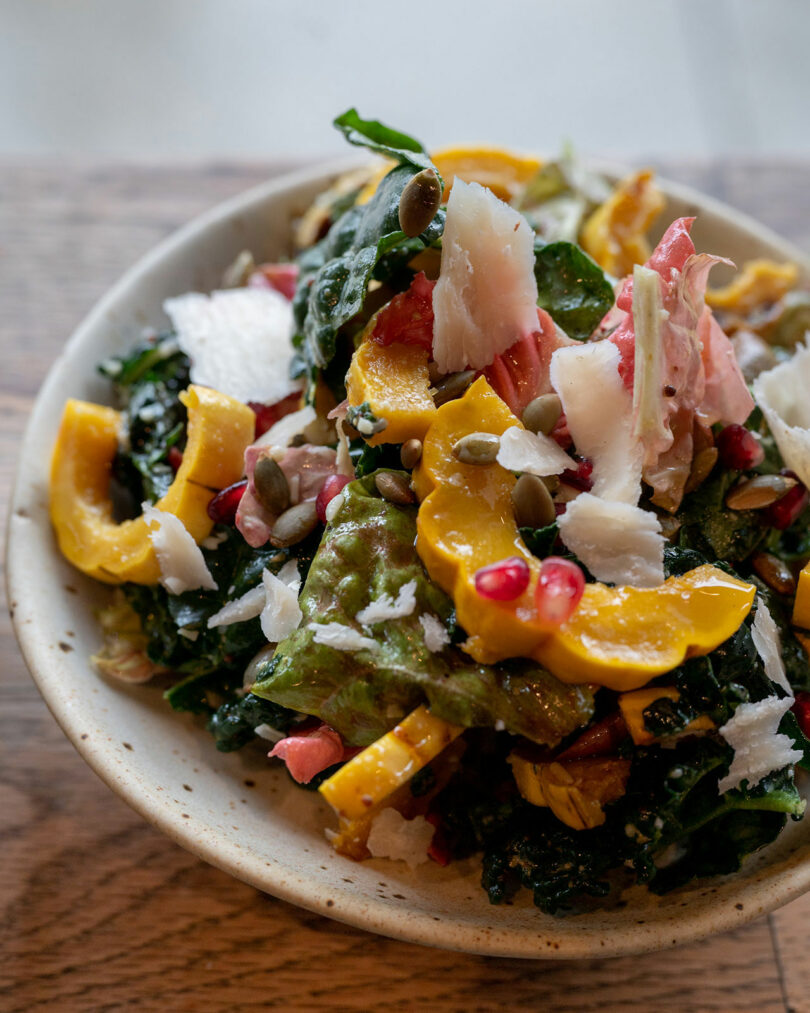
Photo: Trip Davis for Gjelina
2. Earth Food
I love the astringent taste of walnuts, the bitterness of greens like radicchio, arugula, collard, and dandelion, and the spicy, warm taste of ginger. When I traveled to Patagonia a couple of years ago, I was able to begin my mornings with a highly caffeinated traditional Mate, which tasted of grass and soil – in the most delicious possible way.
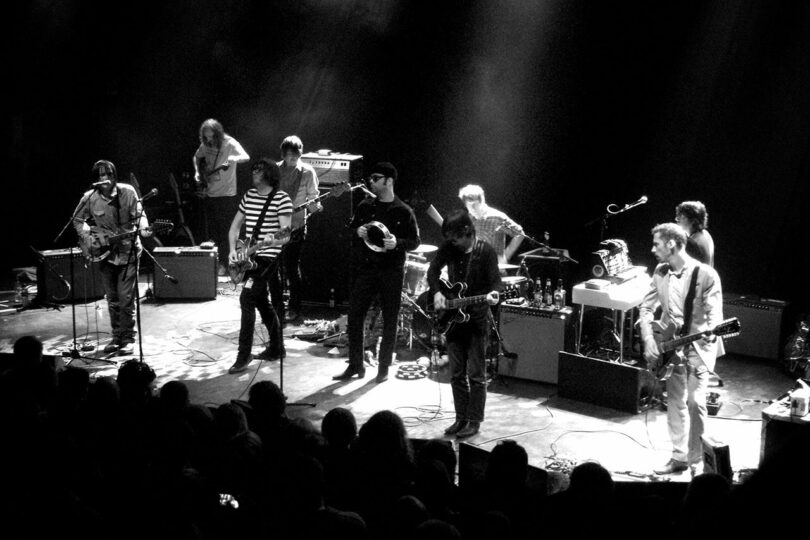
Photo: Aurelien Guichard
3. The Brian Jonestown Massacre
Anton Newcombe is the spirited genius of this still-enduring psychedelic rock band that I have adored since the ‘90s. I have seen them perform live a number of times, first in 1996 at the Troubadour in West Hollywood. Often, there are three or four guitarists playing at the same time, creating a lush and expansive sound that feels three-dimensional. To get an ideal taste of their music, listen to my favorite song, “Anemone.”
4. Traveling With Family
My wife Robin and I have gone on many wonderful adventures with our children since they were young. Traveling this world together focuses us and brings us together in the shared exploration of the unexpected. In addition, doing so gives us the opportunity to meet people with completely different life experiences to our own, and to learn the truths of our world otherwise left unseen.
5. The Films of Michelangelo Antonioni
Antonioni’s films are all about visual storytelling, employing dialogue sparingly and instead using silence to convey meaning. The cinematography is innovative, and his imagery is always captivating. My personal favorite of his films is “Blow Up,” which emphasizes the fashion, music, and spirit of 1960s’ London. The lack of dialogue invites the viewer to interpret the film with explicit subjectivity – similar to how we all experience architecture and space in our own ways.
Work by Ron Radziner:

Photo: Roger Davies
Mandeville Canyon Architecture, Construction, Landscape + Interiors Los Angeles, California A predominantly steel structure built from the ground up, the long rectangular forms of this 7,000-square-foot two-story house expertly thread through the existing sycamores. The building reflects the careful and precise execution of the brick and metal that drove the design. The house follows the gradual slope of the land, so that at its southern end the home floats three feet over the canyon floor.

Photo: Roger Davies
Ross Architecture + Landscape Ross, California This 6,500-square-foot one-story vacation home overlooks a golf course with the San Jacinto mountain range beyond. The house has a light-colored material palette—limestone floors, bleached teak ceilings – and ample access to outdoor living areas.

Photo: Joe Fletcher
Lilac Drive Architecture, Construction, Landscape + Interiors Montecito, California This vacation home has three bedrooms and three bathrooms, with the second story devoted to the master suite. The surrounding oak trees and an existing pathway of a protected creek running through the property helped us determine the design, distinguished by intersecting roof planes, deep overhangs, and large picture windows. Built on a series of terraces, the two-story wood-framed house is clad in a variety of natural materials including Santa Barbara sandstone extracted from the site, reclaimed wood, and smooth-troweled, dark finished cement plaster.
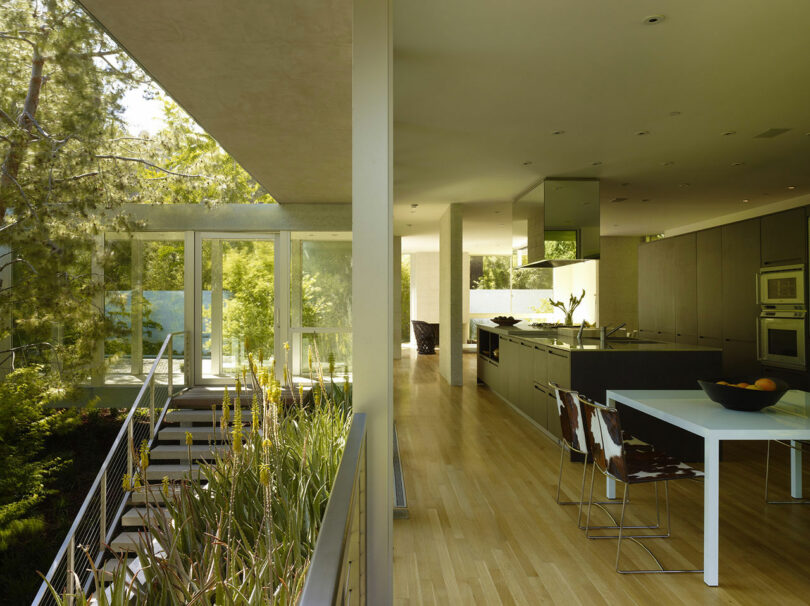
Photo: Matthew Milman
Ward Architecture, Construction + Landscape Los Angeles, California Located in Rustic Canyon, Los Angeles, the 4,000-square-foot Ward Residence captures views of the canyon and the surrounding hills. We integrated the structure within the hillside to take advantage of the steeply sloped lot, engaging both the dramatic vertical height as well as the surrounding landscape. The home is arranged into three separate volumes for public, private, and work areas. We designed the landscape to maximize the available, level outdoor space while providing a textural backdrop to the lap pool and courtyard.

Photo: Joe Fletcher
Moab Architecture + Construction Moab, Utah We designed this two-bedroom, two-bath home – on a hundred acres of rugged Utah desert – with an open plan running along a rock ledge, floor-to-ceiling windows, and expansive decks take advantage breathtaking views. We constructed this home at our former prefab factory. The basic steel module assembly is made up of a floor frame, a roof frame, and columns. We shipped the home to the site complete with pre-installed windows, doors, cabinets, solar panels, appliances, and other interior and exterior finishes, ready for installation. The 2,500-square-foot interior and 1,725-square-foot outdoor deck is made up of five modules and seven modules, respectively, with three for the garage.
[ad_2]
Source link


